The number of Americans age 25 and older with a master’s or doctoral degree has doubled to over 28 million since 2000. Now, about 13 percent of Americans hold an advanced degree, and they earn on average 3.7 times as much as those who have not completed high school.
Those with degrees from community colleges or state universities tend to settle close to their alma mater. Graduates of elite colleges tend to head for the big city and may even move hundreds of miles away for their careers. This results in some areas of the country attracting large numbers of college graduates, particularly those with advanced degrees.
A state’s economy plays a role, as well as cultural and entertainment attractions. Overall, states with a higher percentage of residents with an advanced degree tend to be those with large metropolitan areas where large corporate headquarters are located. People move to where the best jobs are.
These are the most educated states in the United States, ranked from the lowest to the highest, including the District of Columbia.
51. Arkansas
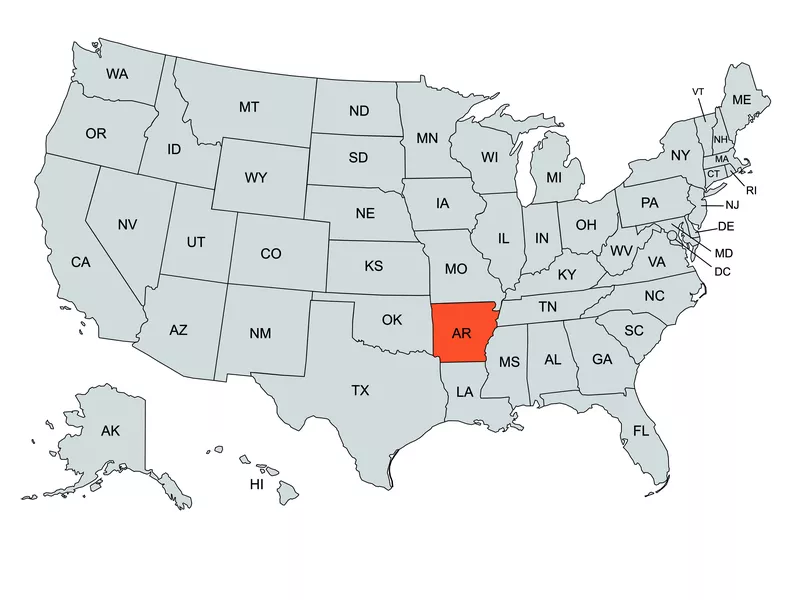
mapchart.net
Population: 3,011,524
Capital: Little Rock
Arkansas Facts and Figures
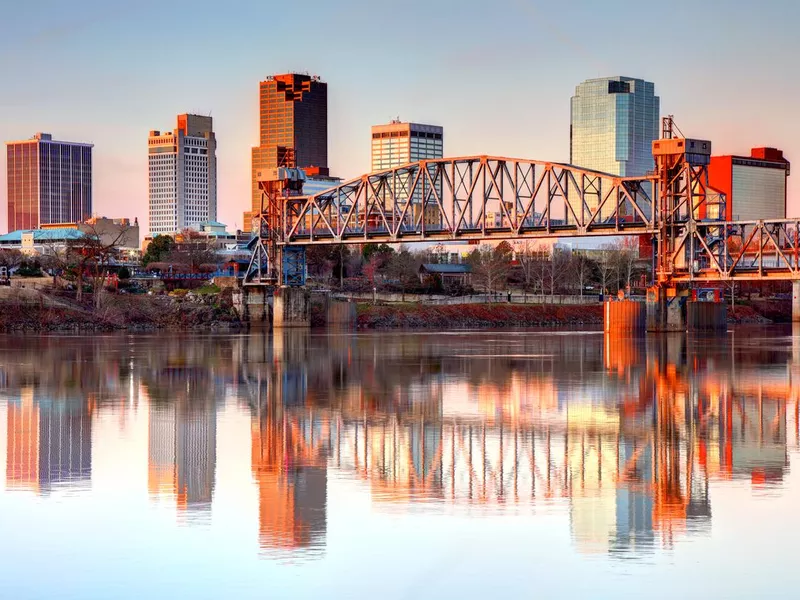
DenisTangneyJr / Getty Images
Percent holding advanced degrees: 8.3
Median household income: $47,062
Note: The percentages of people holding advanced degrees come from the 2019 U.S. Census Bureau’s American Community Survey (ACS). Median household income is from a 2021 ACS survey.
Bottom Line for Arkansas
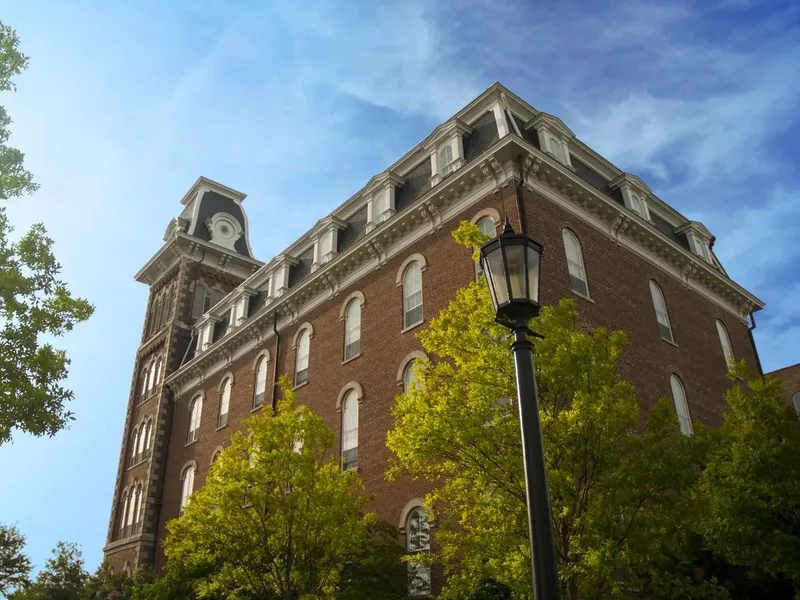
BlazenImages / Getty Images
The low cost of living is what draws people to Arkansas. It constantly ranks among the cheapest places to live in the country and is 10 to 15 percent lower than the national average — housing, groceries, utilities and transportation are all cheaper here.
The state's main industry is agriculture, and it ranks fourth nationally and first in the South in softwood production.
Arkansas is home to 12 private universities, 10 state universities, 22 two-year colleges, and an academic health center.
50. West Virginia
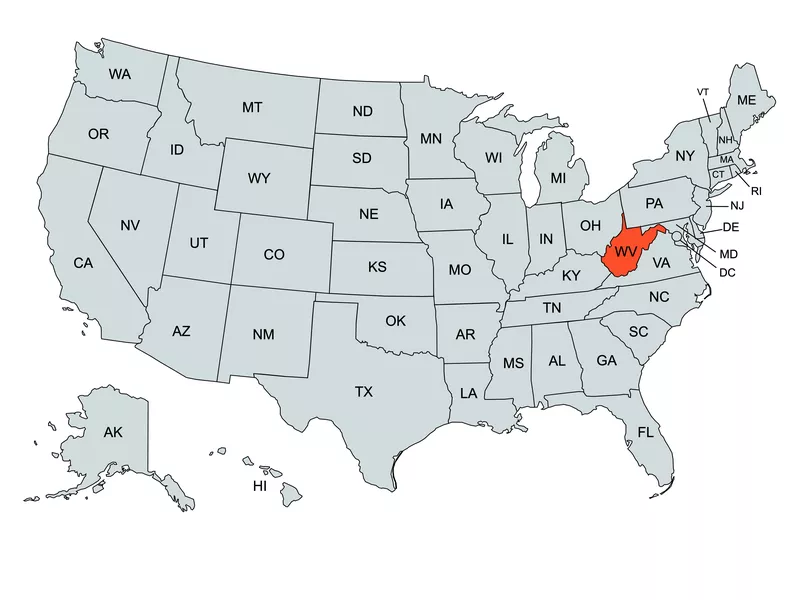
mapchart.net
Population: 1,793,716
Capital: Charleston
West Virginia Facts and Figures
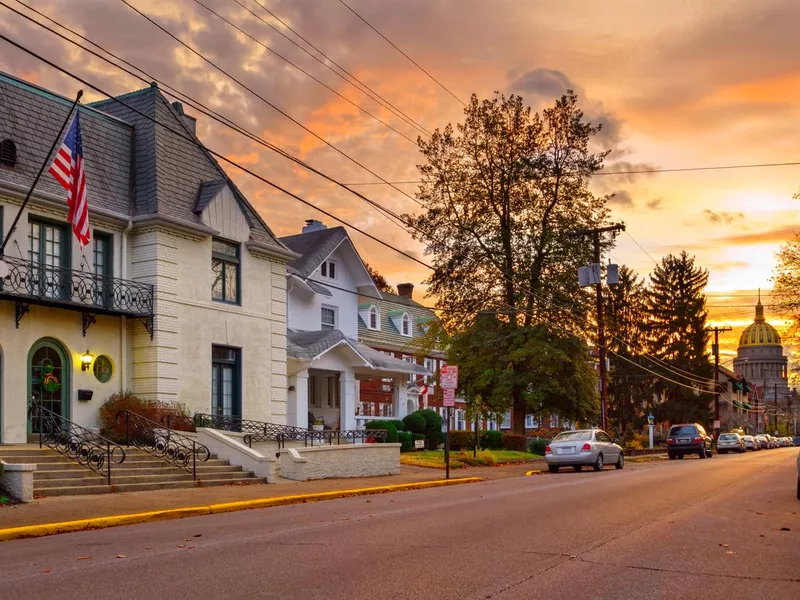
benedek / Getty Images
Percent holding advanced degrees: 8.4
Median household income: $44,097
Bottom Line for West Virginia
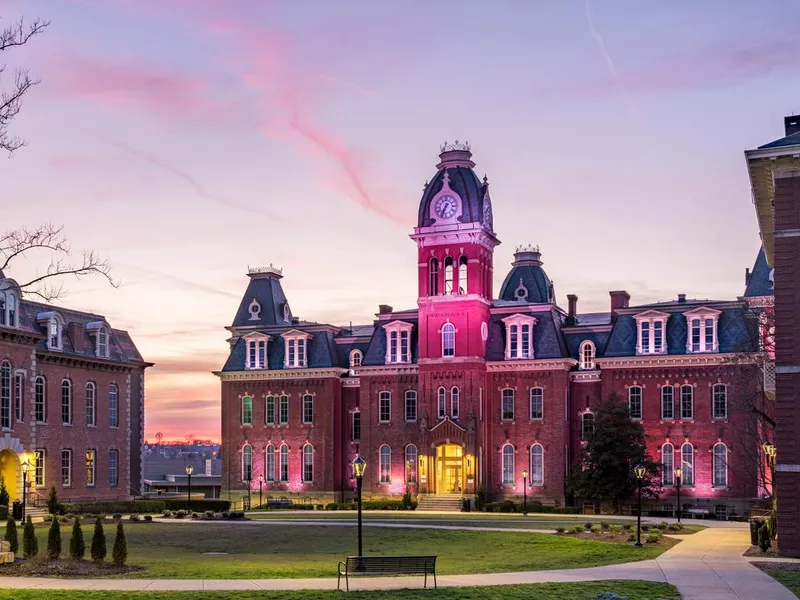
BackyardProduction / Getty Images
The beauty of West Virginia is widely known. Seventy-five percent of the state is covered in the forested areas of the Appalachian Mountains.
West Virginia has low home prices, a low tax rate and plenty of outdoor activities for families. However, parts of the state are extremely impoverished.
There are 44 colleges in West Virginia, two of which are land-grant universities and two that are historically Black institutions.
49. Mississippi
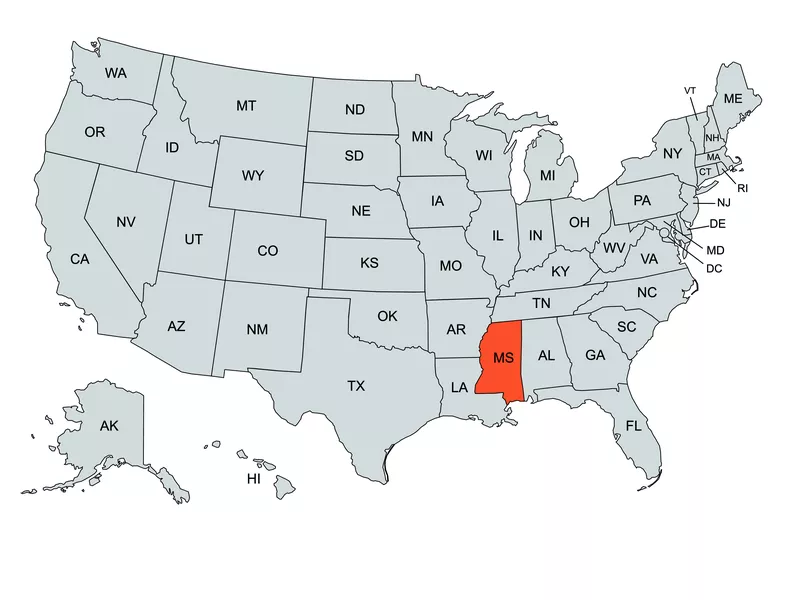
mapchart.net
Population: 2,961,279
Capital: Jackson
Mississippi Facts and Figures
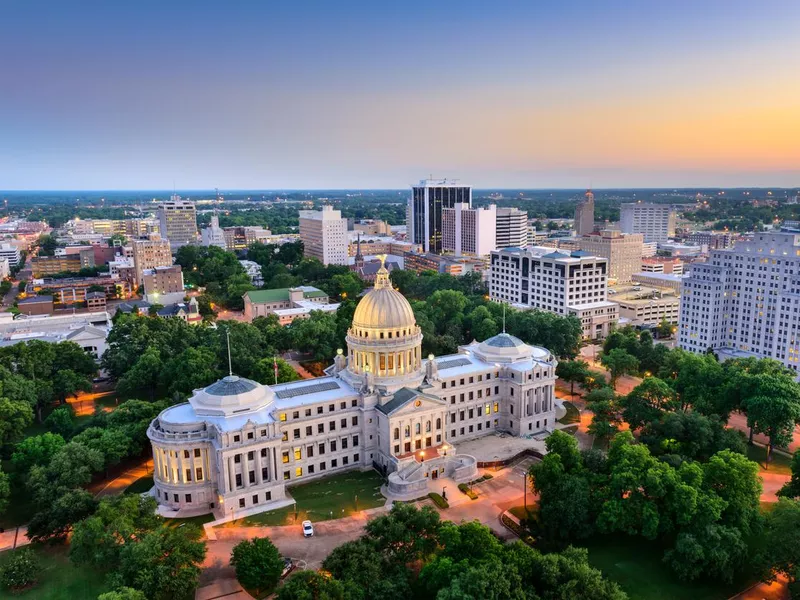
SeanPavonePhoto / Getty Images
Percent holding advanced degrees: 8.6
Median household income: $44,717
Bottom Line for Mississippi

LightFieldStudios / Getty Images
Homes in Mississippi are 40 percent below the median-priced homes in other states. Basic necessities are also below the national average, as is child care.
At less than $10,000 for a year of courses, a college education is very affordable in Mississippi, and there are 37 schools of higher education with about 170,000 students to choose from.
48. Louisiana
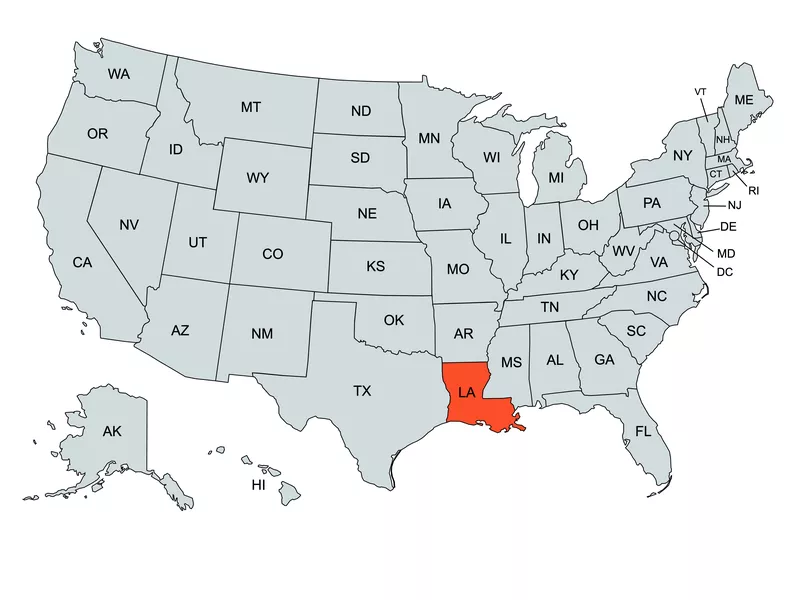
mapchart.net
Population: 4,657,757
Capital: Baton Rouge
Louisiana Facts and Figures
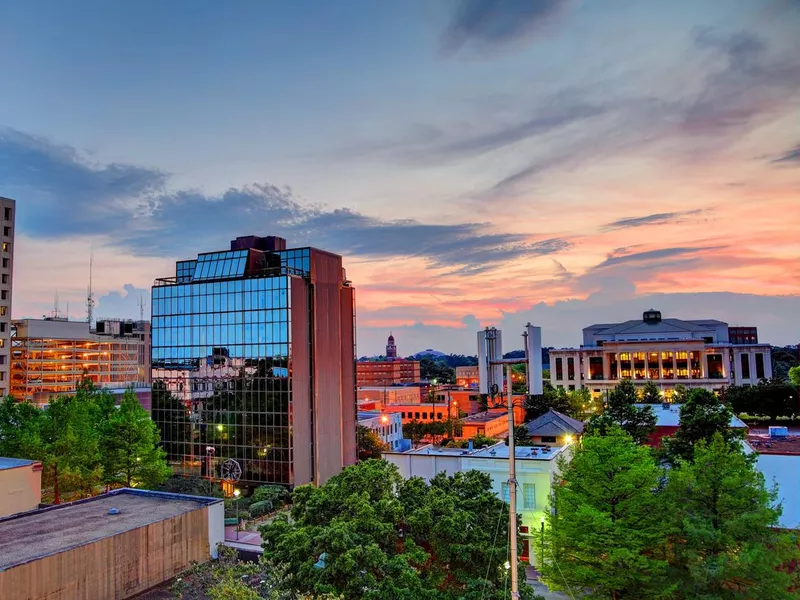
DenisTangneyJr / Getty Images
Percent holding advanced degrees: 8.9
Median household income: $47,905
Bottom Line for Louisiana
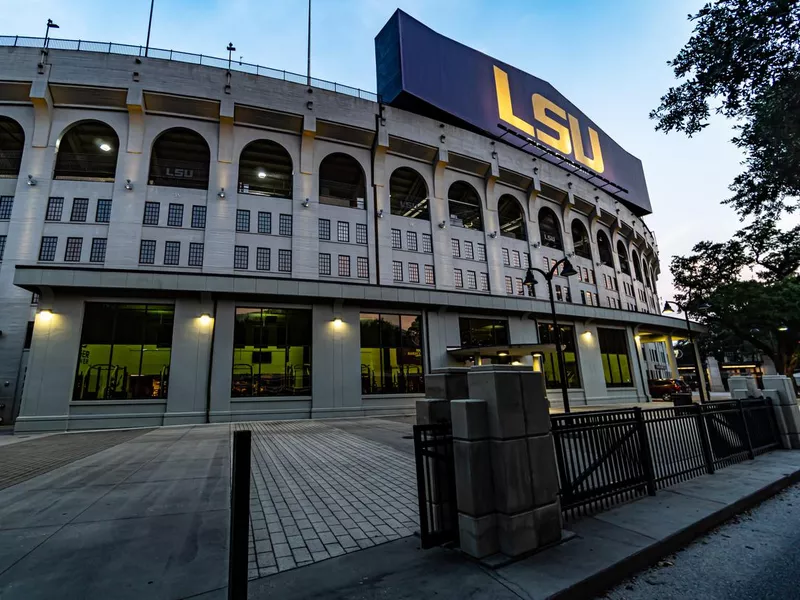
ReDunnLev / Getty Images
Louisiana is known for its rich history and culture, and friendly, relaxed people.
The state's low cost of living and jobs in petroleum, commercial fishing, agriculture and tourism drive new residents to the state every year.
Louisiana also has a whopping 66 colleges and universities with about 245,000 students.
47. North Dakota
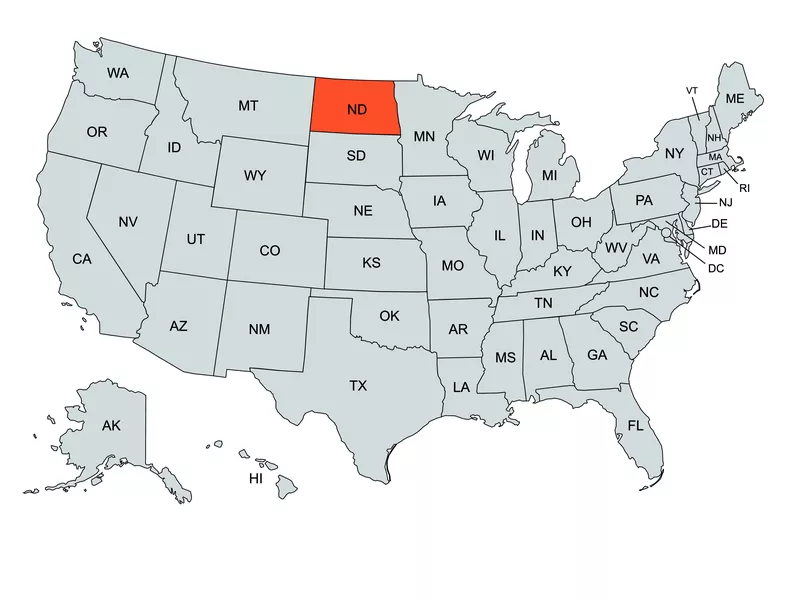
mapchart.net
Population: 779,094
Capital: Bismarck
North Dakota Facts and Figures
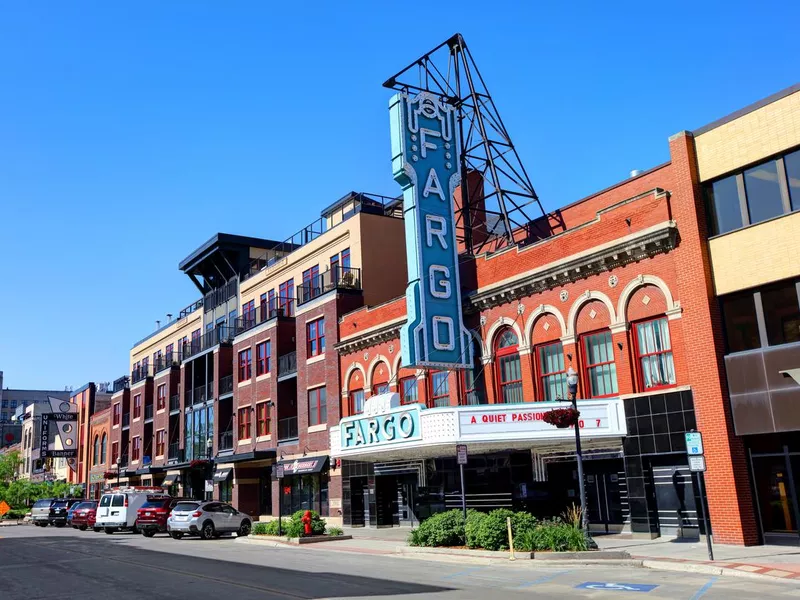
DenisTangneyJr / Getty Images
Percent holding advanced degrees: 8.9
Median household income: $63,837
Bottom Line for North Dakota
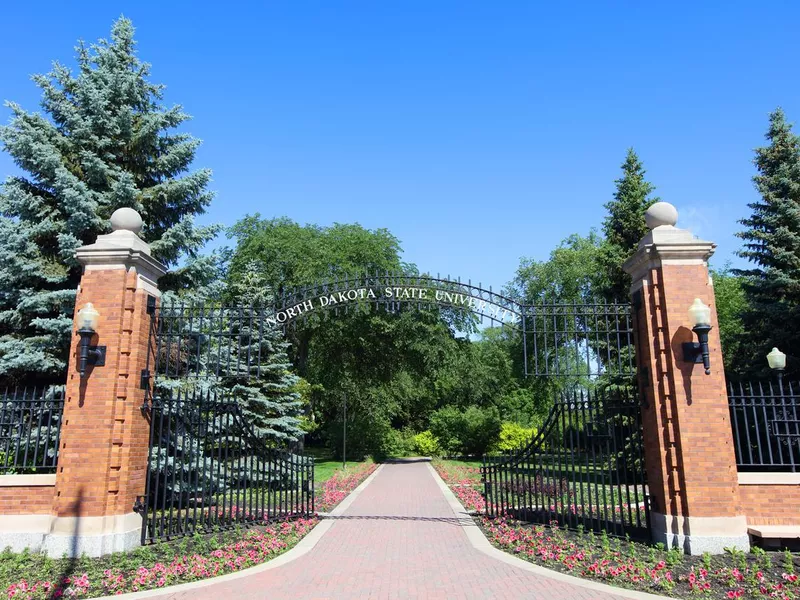
DenisTangneyJr / Getty Images
If you feel like stretching your wings, North Dakota has plenty of wide-open spaces, job opportunities in energy, agriculture, and healthcare, a solid educational system, and an affordable cost of living.
Getting a college degree in one of the state's 20 colleges and universities, particularly for in-state residents, compares favorably to most states around the country.
46. Nevada
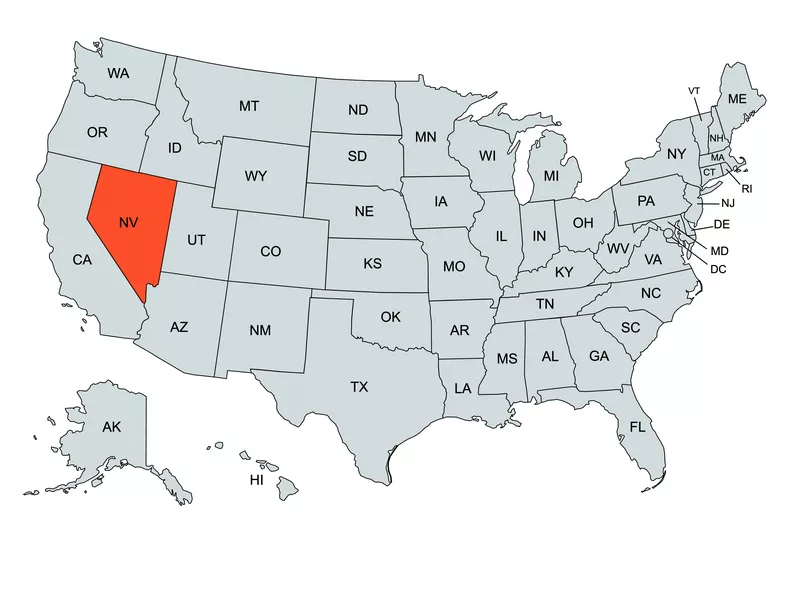
mapchart.net
Population: 3,104,614
Capital: Carson City
Nevada Facts and Figures

RandyAndy101 / Getty Images
Percent holding advanced degrees: 9.0
Median household income: $58,646
Bottom Line for Nevada
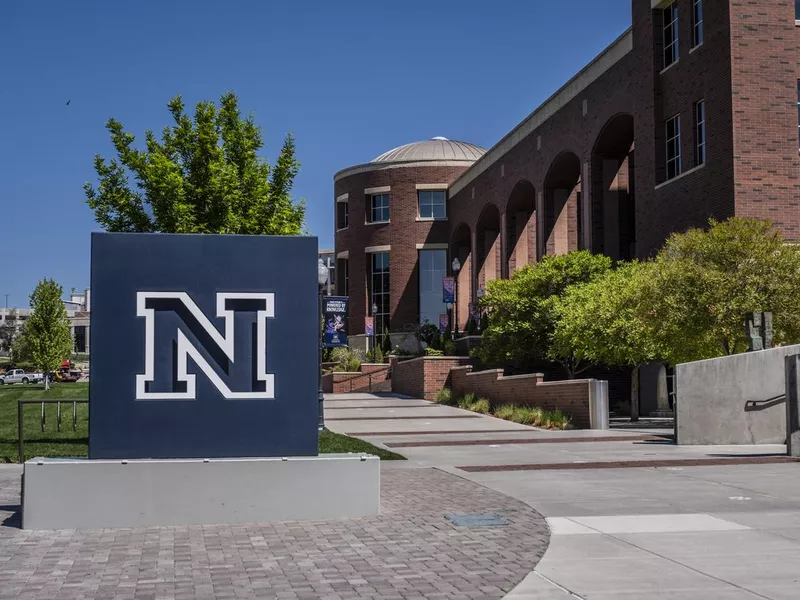
Brycia James / Getty Images
Nevada has long been known for being the gambling capital of the U.S., but it is so much more than the Vegas strip. The state has grown exponentially due to its lower cost of living and recreational activities of all kinds. Plus, not having state income tax doesn't hurt, either.
Aside from tourism and entertainment, Nevada is home to industries in aerospace and defense, energy, healthcare, agriculture, and information tech.
Low-income students can attend one of the state's 26 colleges through the Nevada Guarantee, a free program that covers the cost of nearly everything school-related, including books, tuition and other fees.
45. Oklahoma
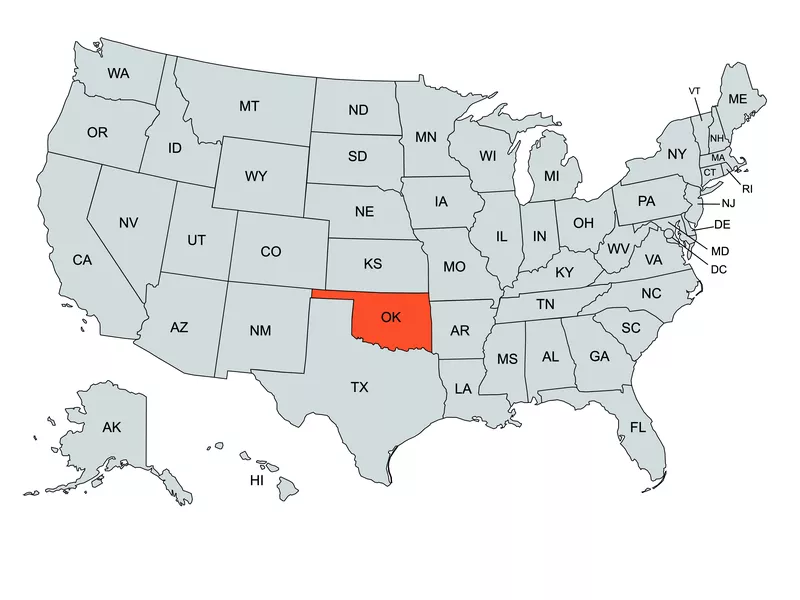
mapchart.net
Population: 3,959,353
Capital: Oklahoma City
Oklahoma Facts and Figures

Davel5957 / Getty Images
Percent holding advanced degrees: 9.1
Median household income: $51,924
Bottom Line for Oklahoma

Joyce Diva / Getty Images
Whether you own or rent, Oklahoma housing prices are affordable in comparison to many other states. Food, utilities, and transportation are also on the cheaper side and equivalent to that of Missouri. Oklahoma's population skews younger than many states, and employment here is at an all-time high.
The state's main industries include the U.S. Department of Defense, Walmart, the state university system, and the Chickasaw Nation casinos.
There is a wide range of choices for higher education. Oklahoma City alone boasts 15 private and public colleges with about 144,000 students.
44. South Dakota
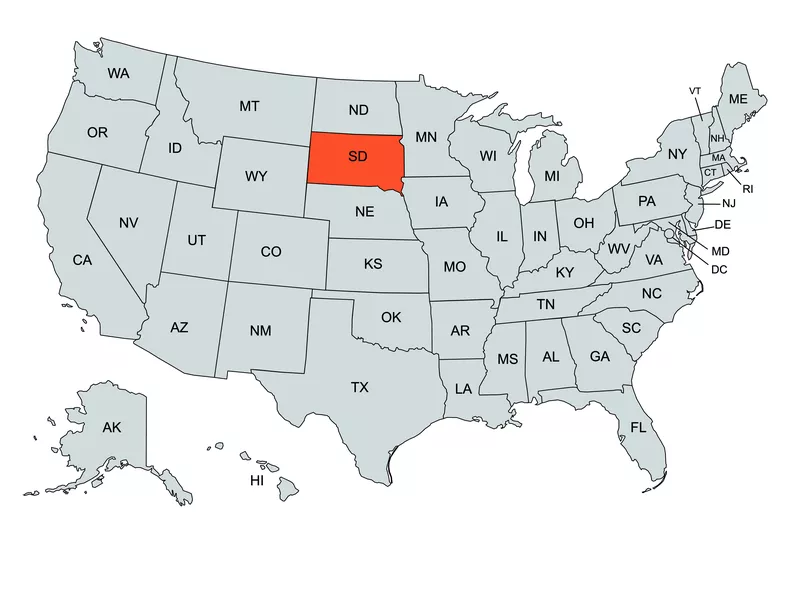
mapchart.net
Population: 5,118,425
Capital: Pierre
South Dakota Facts and Figures
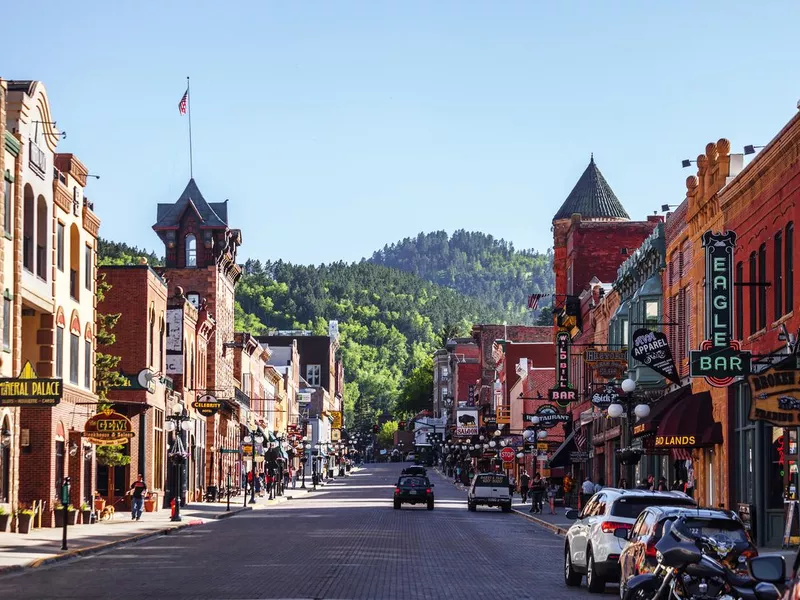
peeterv / Getty Images
Percent holding advanced degrees: 9.1
Median household income: $56,274
Bottom Line for South Dakota
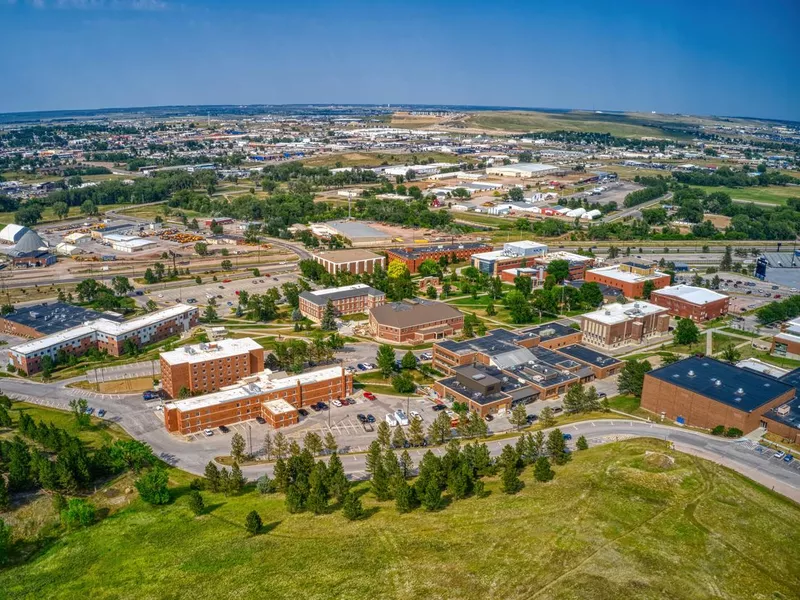
Jacob Boomsma / Getty Images
People who love small-town living, low crime, little traffic, and a booming economy flock to South Dakota.
Some of its main industries are agriculture, dairy, wood, electronics, computers, and light machinery.
The state has plenty of quality colleges and universities. There are 18 four-year colleges with about 46,000 students enrolled.
43. Iowa
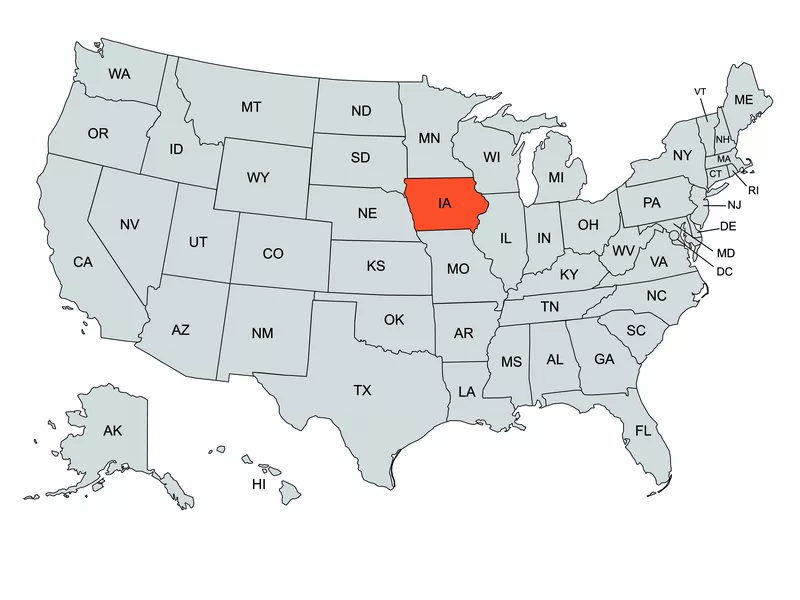
mapchart.net
Population: 3,190,369
Capital: Des Moines
Iowa Facts and Figures
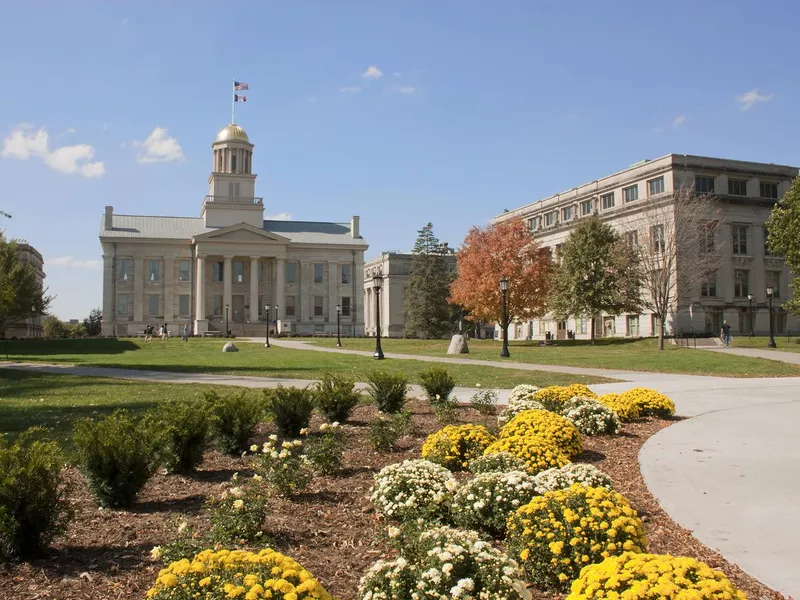
FreeTransform / Getty Images
Percent holding advanced degrees: 9.5
Median household income: $59,955
Bottom Line for Iowa
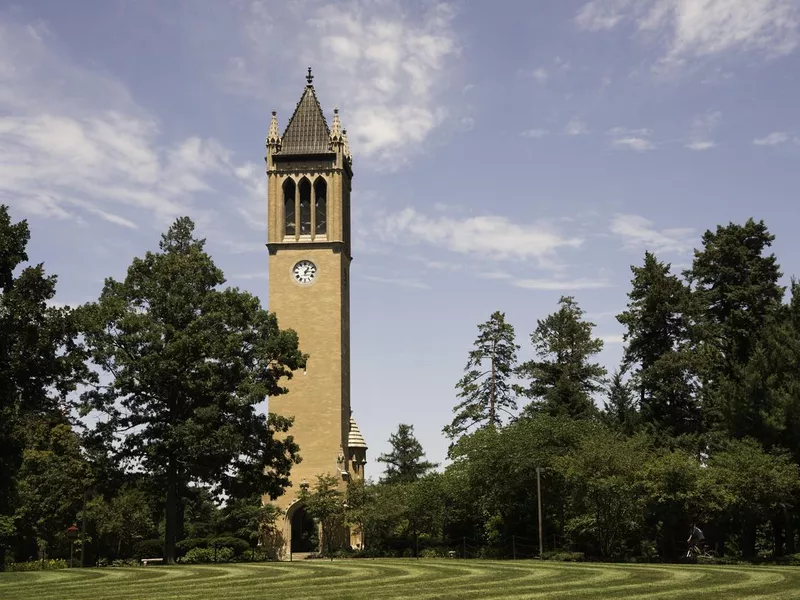
dosecreative / Getty Images
If your future is in agriculture, Iowa may be the place for you. It has more pigs than any other state and an abundance of cattle ranches, chicken, and dairy farms. Jobs in manufacturing, transportation, machinery, wind and solar are also quite common.
Iowa is also known for having a high percentage of high school graduates, and boasts top colleges like Iowa State University, the University of Northern Iowa, and the University of Iowa, which is also one of the state's largest employers.
On top of everything else, the cost of living in Iowa is lower than the national average.
42. Indiana
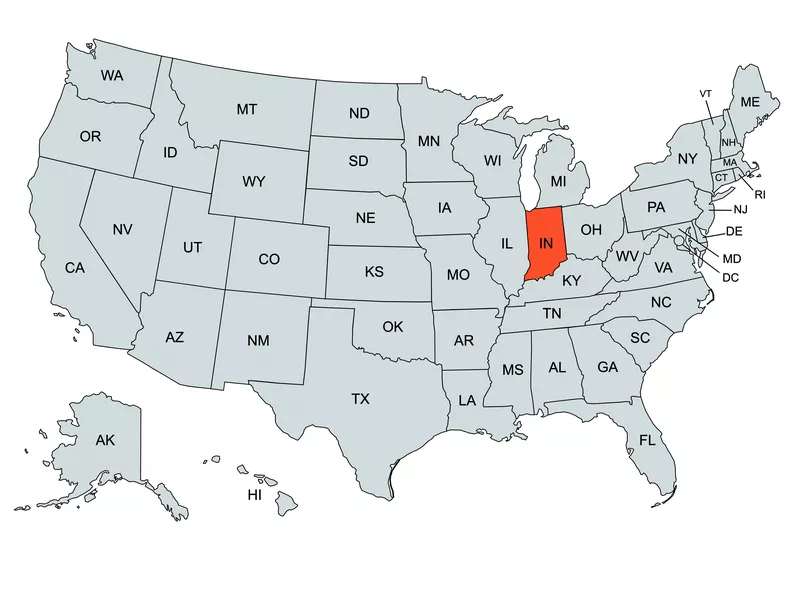
mapchart.net
Population: 6,785,528
Capital: Indianapolis
Indiana Facts and Figures
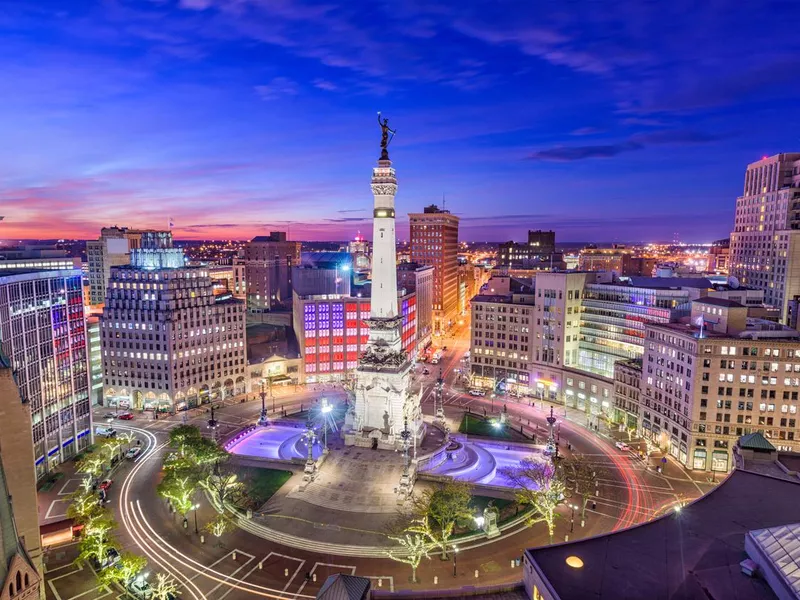
Sean Pavone / Getty Images
Percent holding advanced degrees: 9.7
Median household income: $55,746
Bottom Line for Indiana
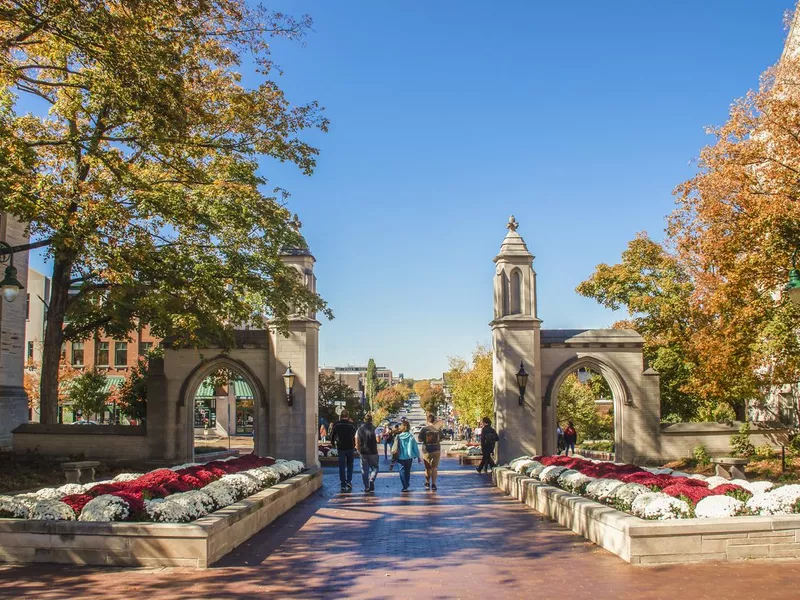
Susan Vineyard / Getty Images
Living costs, such as housing and property taxes are relatively affordable in Indiana, as are other necessities, such as groceries, healthcare and transportation.
Indiana is the largest steel producing state in the country and the second largest for auto manufacturing. Other industries include pharmaceuticals, coal, rubber, and petroleum.
Indiana schools are well respected and are known to propel their students into great careers. Of its 86 colleges and universities, Indiana University, Notre Dame, Purdue and Butler University are all located in the state.
41. Idaho
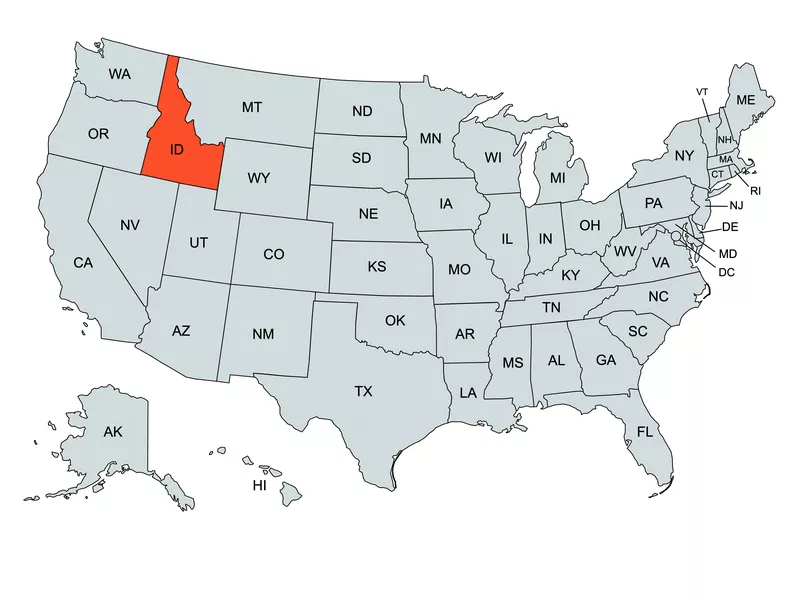
mapchart.net
Population: 1,839,106
Capital: Boise
Idaho Facts and Figures
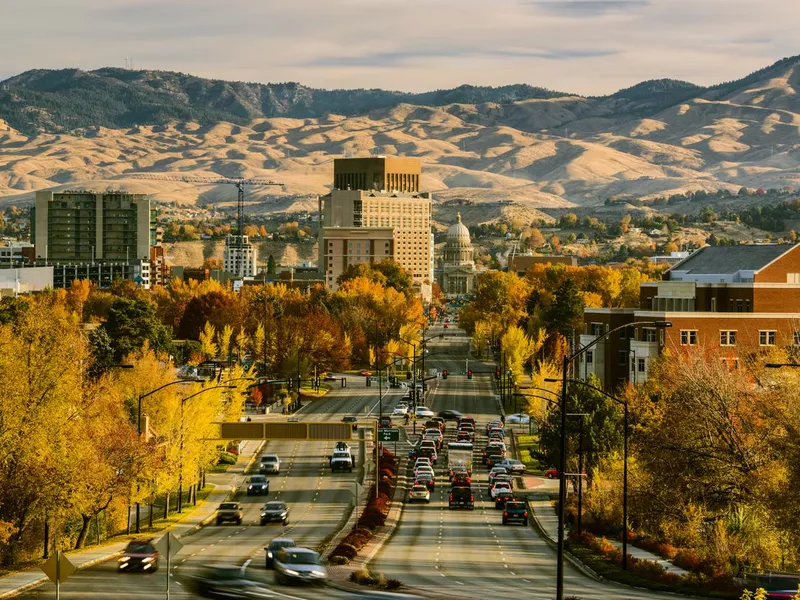
vkbhat / Getty Images
Percent holding advanced degrees: 9.9
Median household income: $55,583
Bottom Line for Idaho

benedek / Getty Images
Natural beauty, plenty of outdoor actives and family-friendly living is causing people from other states to relocate to Idaho. Here, home building is at an all-time high. Most of the homes in the state were built after 2000.
Agriculture employs 15 percent of the workforce, who work on ranches and farms. Healthcare and government are also big employers.
There are 15 colleges and universities in Idaho. The largest is Boise State University with 20,000 students.
40. Alabama
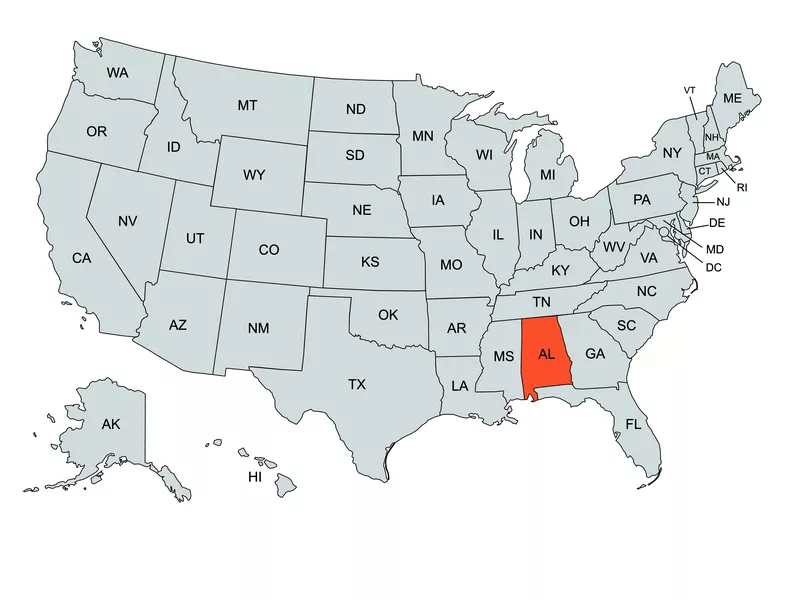
mapchart.net
Population: 5,024,279
Capital: Montgomery
Alabama Facts and Figures

Sean Pavone / Getty Images
Percent holding advanced degrees: 10.0
Median household income: $49,861
Bottom Line for Alabama
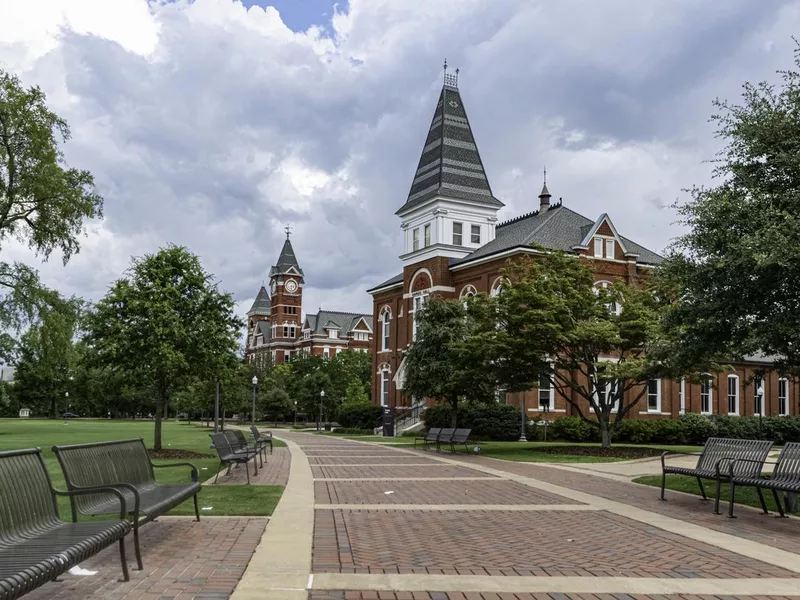
Jacqueline Nix / Getty Images
With its 60 miles of beaches and temperate weather throughout most of the year, Alabama is a very family-friendly state. Service members have plenty of infrastructure here, and all citizens reap the rewards of the state's low cost of living.
Alabama's main industries are iron and steel products, paper, lumber, wood, mining and vehicle manufacturing.
There are 78 colleges and universities in the state. Auburn and Alabama Universities have some of the best programs for engineering, science, and business in the U.S. The University of Alabama at Birmingham also boasts one of the best medical programs in the country.
39. Kentucky
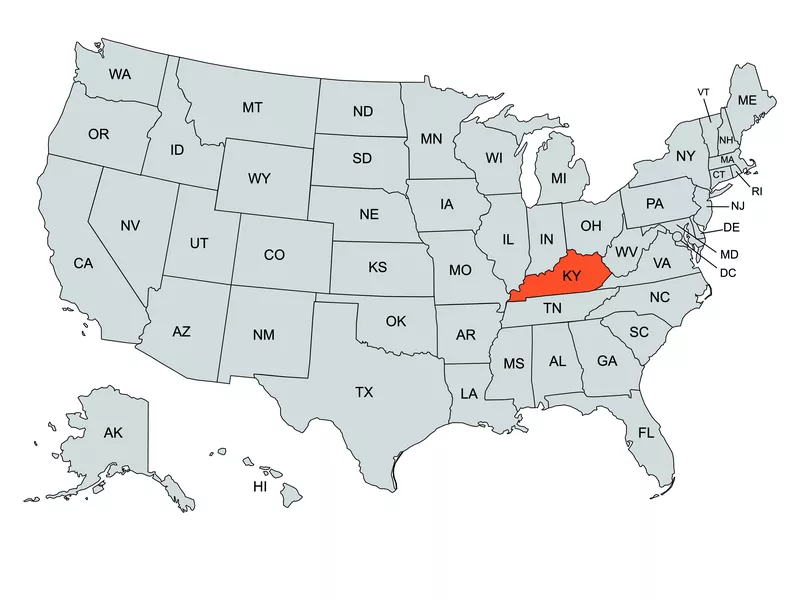
mapchart.net
Population: 4,505,836
Capital: Frankfort
Kentucky Facts and Figures
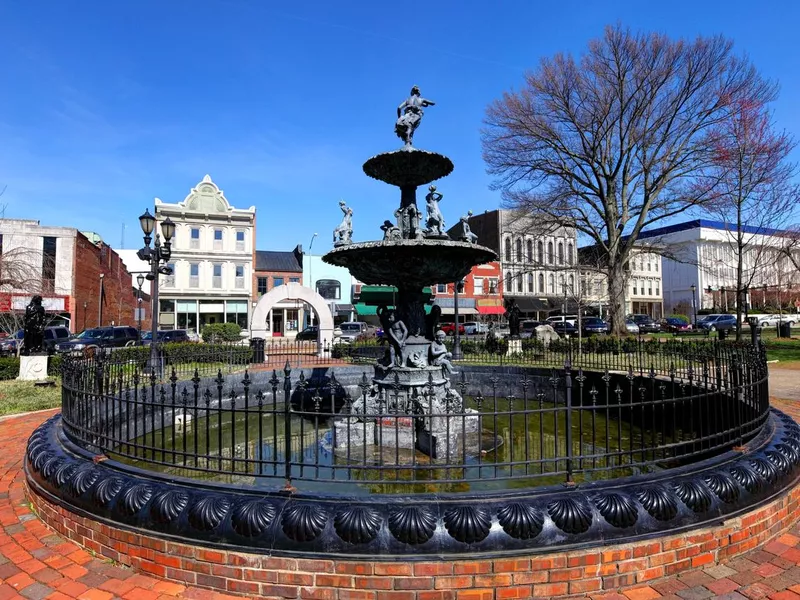
DenisTangneyJr / Getty Images
Percent holding advanced degrees: 10.3
Median household income: $50,247
Bottom Line for Kentucky
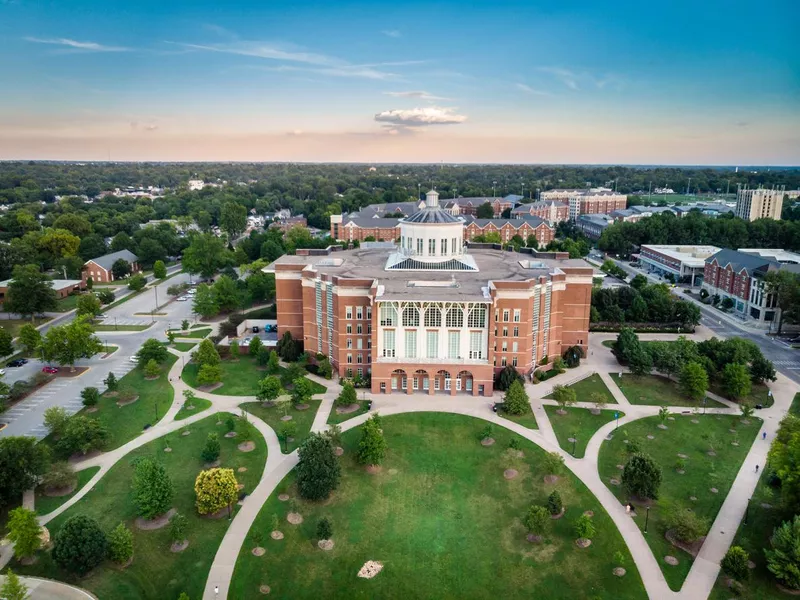
alexeys / Getty Images
If you have a love of outdoor recreation, you'll love Kentucky's expansive park system, which has a national park, two national recreational areas, and 45 state parks. There are also 40,000 acres of state forests to explore.
Home prices and rent are lower than the U.S. average, although you will pay a little more if you choose to live in a city like Lexington or Louisville.
College basketball is everything in Kentucky, particularly at two of its largest universities — the University of Kentucky and University of Louisville. You'll see many soon-to-be NBA players come out of these schools.
38. Wyoming
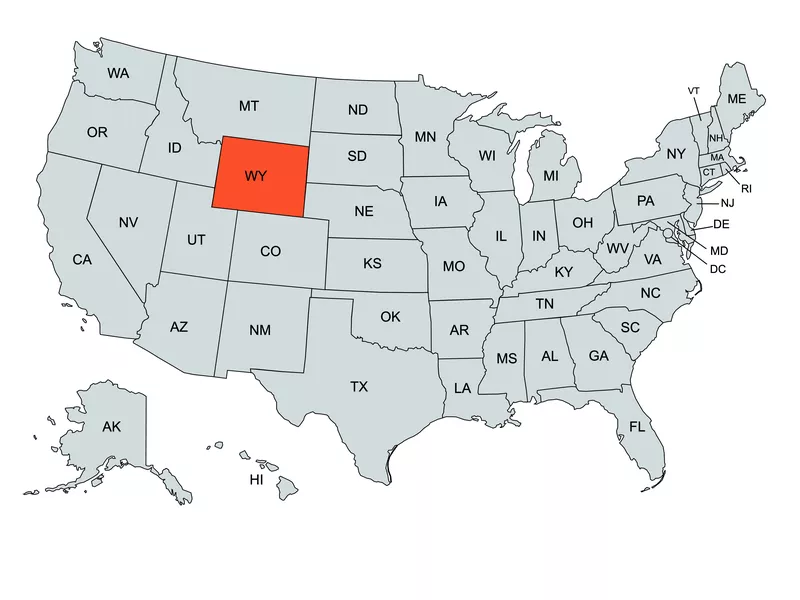
mapchart.net
Population: 578,803
Capital: Cheyenne
Wyoming Facts and Figures
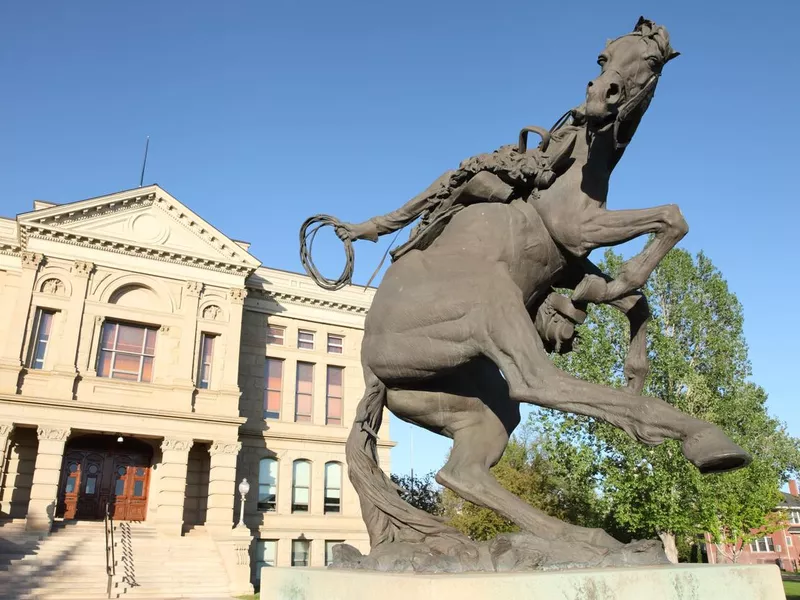
DenisTangneyJr / Getty Images
Percent holding advanced degrees: 10.4
Median household income: $61,584
Bottom Line for Wyoming

grandriver / Getty Images
Wyoming is very friendly to small businesses in that it doesn't have corporate or personal income tax. It also doesn't tax retirement income and the property tax rate is the ninth lowest in the country. While the cost of living can be higher in the bigger cities, it is closer to the average in the smaller communities.
Industry is tied to manufacturing, mining and agriculture, although the state is becoming a tourist destination.
With only one public university (the University of Wyoming) and one private university (Wyoming Catholic College), Wyoming does not have a lot of advanced education choices. However, students from Wyoming can attend school on the cheap in 14 other states through the Western Undergraduate Exchange.
37. Montana
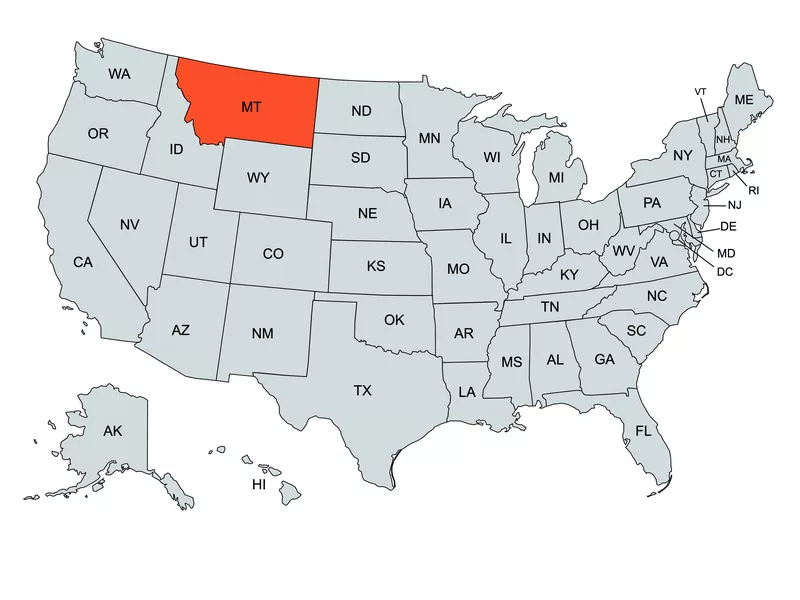
mapchart.net
Population: 1,084,225
Capital: Helena
Montana Facts and Figures
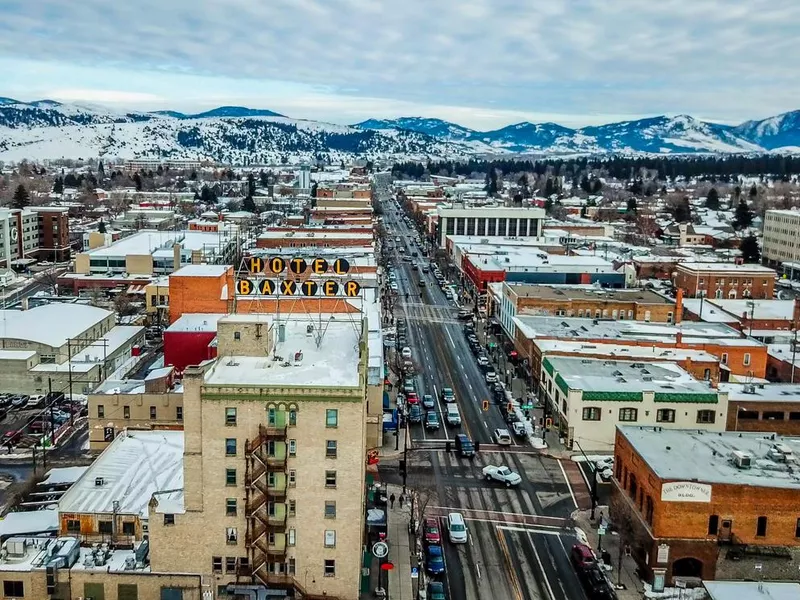
DianeBentleyRaymond / Getty Images
Percent holding advanced degrees: 10.5
Median household income: $55,328
Bottom Line for Montana
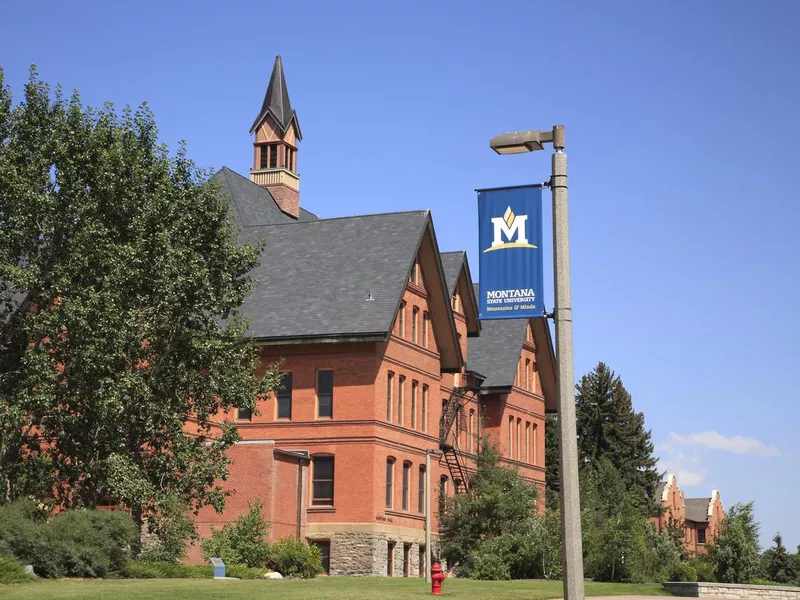
Solidago / Getty Images
As the third-least populated state, Montana has plenty of cheap housing, but not everywhere. In some places, homes are less than $100,000. In others, they are about $600,000. Nevertheless, property taxes are quite low.
The cost of living, however, is still lower than the national average, and the state has plenty of natural resources like coal, oil, gas and water.
There are 11 colleges and universities in Montana, among them Montana State University, which is consistently ranked as one of the top schools in the nation.
36. Wisconsin
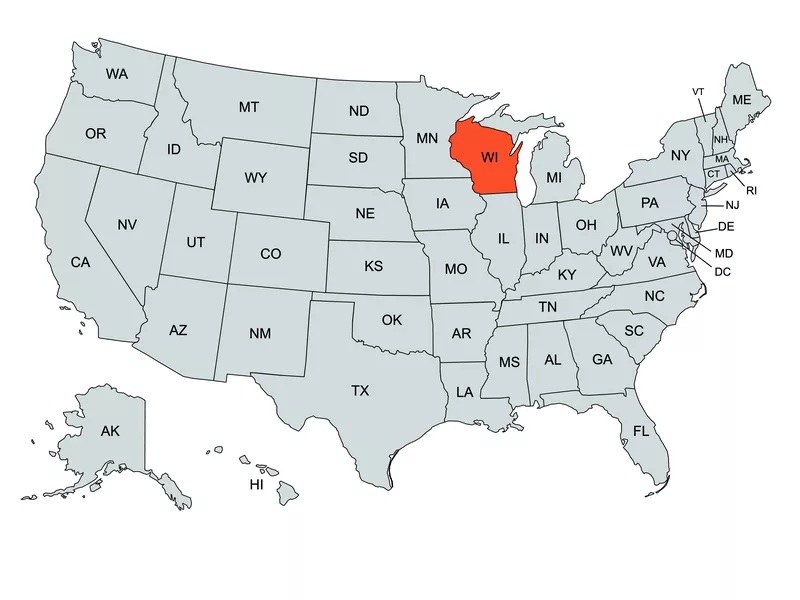
mapchart.net
Population: 5,893,718
Capital: Madison
Wisconsin Facts and Figures

Ron and Patty Thomas / Getty Images
Percent holding advanced degrees: 10.7
Median household income: $60,773
Bottom Line for Wisconsin
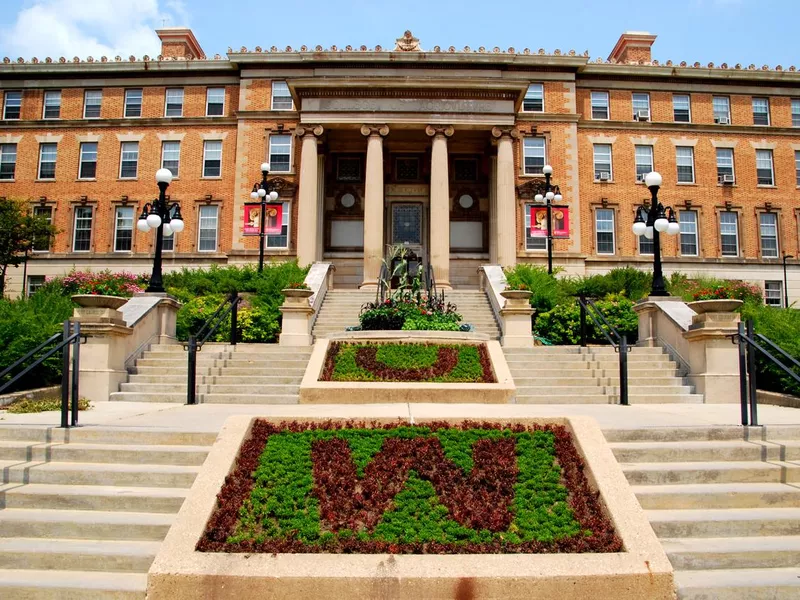
youngryand / Getty Images
The cost to live in Wisconsin is 15 percent less than the national average, particularly in the northern part of the state. Home prices can creep up in cities like Milwaukee.
Agriculture, manufacturing, and tourism are booming industries, and Wisconsin often ranks in the top quarter for them.
Many of the state's 85 colleges and universities are also consistently highly ranked.
35. Tennessee
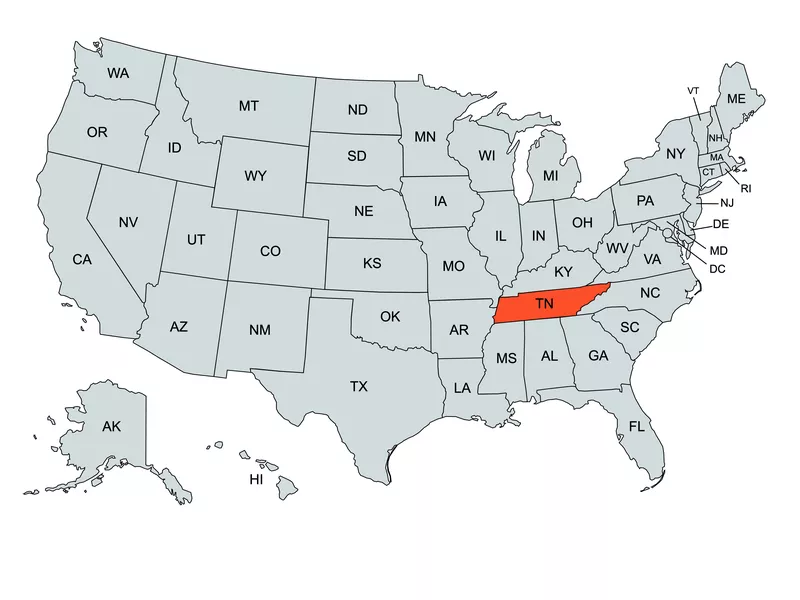
mapchart.net
Population: 6,910,840
Capital: Nashville
Tennessee Facts and Figures
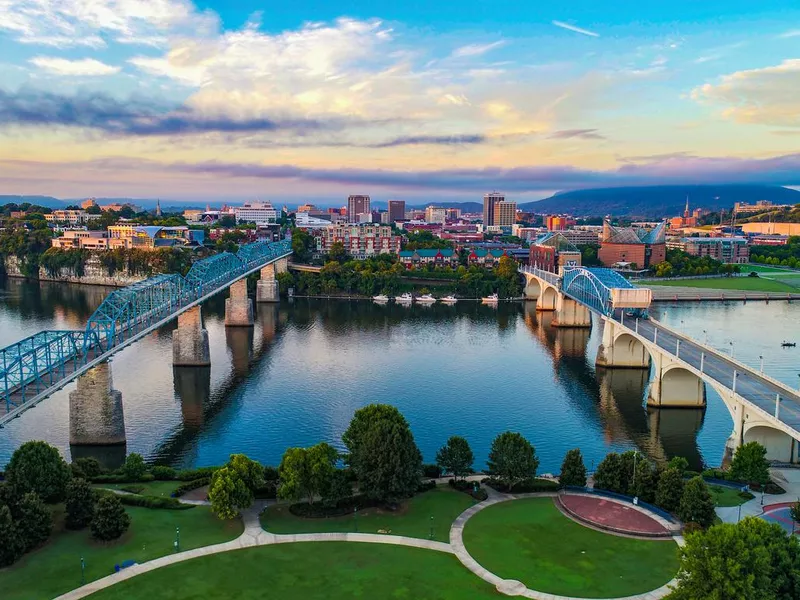
Kruck20 / Getty Images
Percent holding advanced degrees: 10.7
Median household income: $52,375
Bottom Line for Tennessee
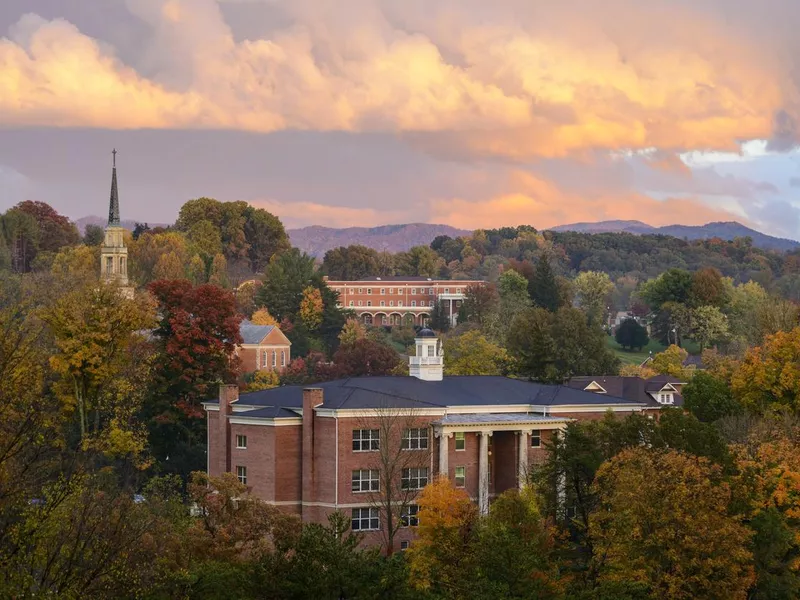
Joel Carillet / Getty Images
So many people are moving to Tennessee, that the cost of living has increased. Nevertheless, it is still a popular destination for people who want a more reasonable lifestyle.
The state is one of just a few with no income tax, and its main industries are entertainment, healthcare, transportation and finance.
The Tennessee Promise is a program run by the state to encourage higher education. It provides some students with scholarship money to attend community college and offers individual guidance from qualified mentors.
34. Texas
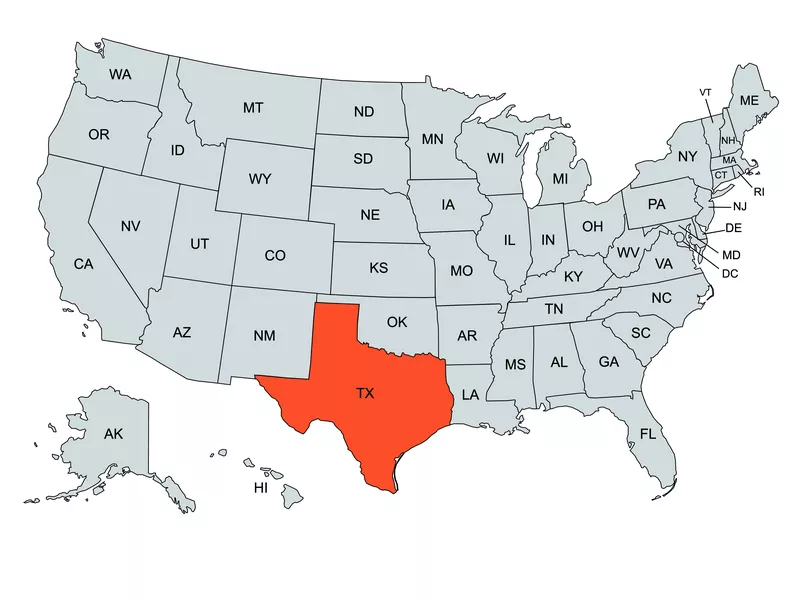
mapchart.net
Population: 29,145,505
Capital: Austin
Texas Facts and Figures

Raymond Palmer / Getty Images
Percent holding advanced degrees: 10.8
Median household income: $60,629
Bottom Line for Texas

qingwa / Getty Images
Texas is booming. Much like Tennessee, people are moving to the Lone Star State for its lower cost of living and jobs. It is also one of the few states that do not have income tax.
You have plenty of choices for advanced education in Texas. There are 92 four-year higher learning institutions with about 844,000 students.
33. Ohio
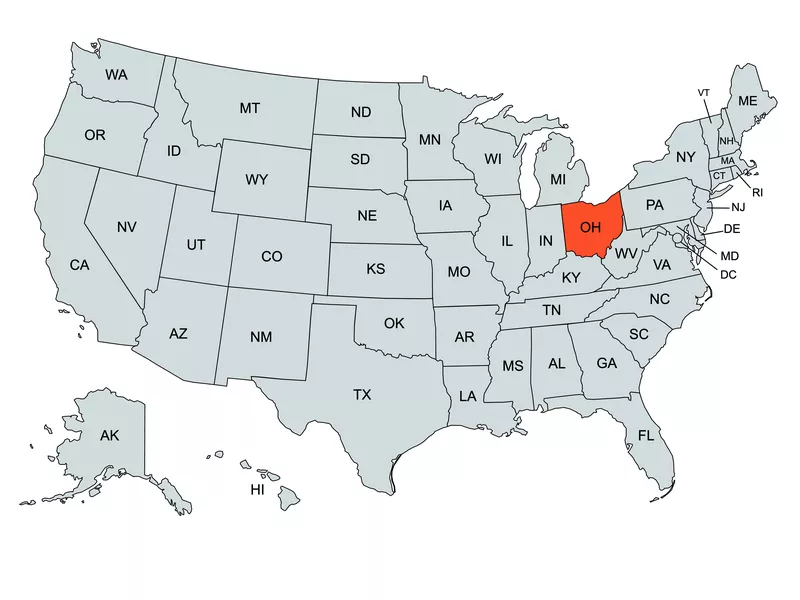
mapchart.net
Population: 11,799,448
Capital: Columbus
Ohio Facts and Figures
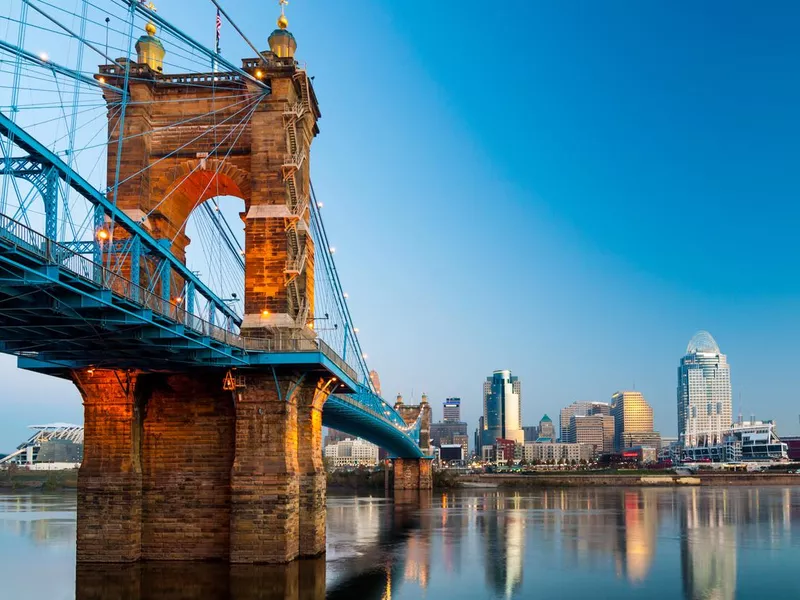
Davel5957 / Getty Images
Percent holding advanced degrees: 11.0
Median household income: $56,111
Bottom Line for Ohio
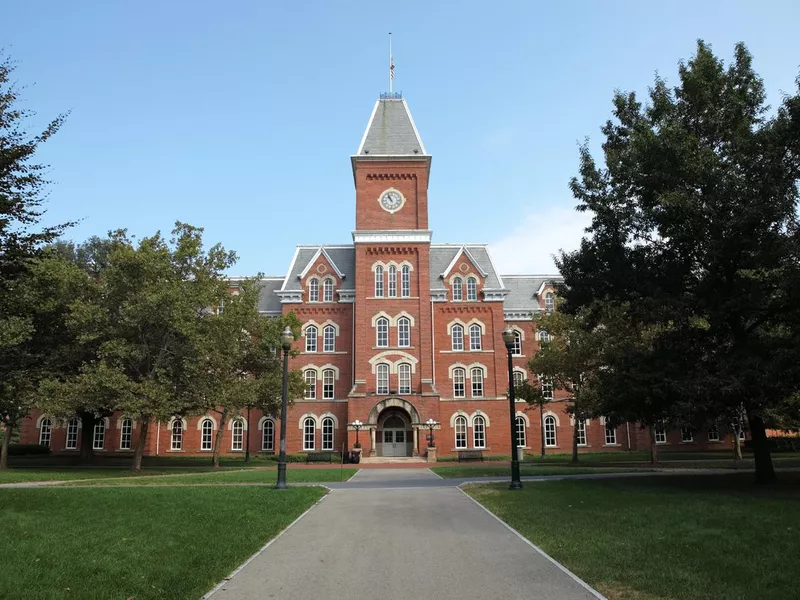
DenisTangneyJr / Getty Images
As a Rust Belt state, Ohio did have a rough few decades in terms of employment, but with industries like aerospace, healthcare, agriculture, and auto manufacturing, it appears to be making a comeback.
The median home value is 40 percent lower than the national average and rents are about 30 percent lower, making it very affordable for families.
Ohio has many options for higher education — 137 schools, with 14 public universities, 23 community and technical colleges, and over 50 four-year private colleges.
32. South Carolina
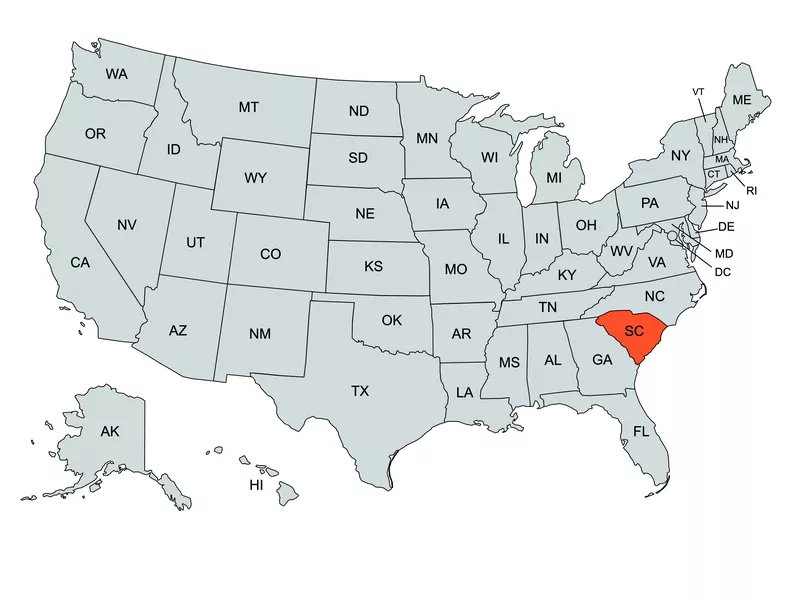
mapchart.net
Population: 5,118,425
Capital: Columbia
South Carolina Facts and Figures
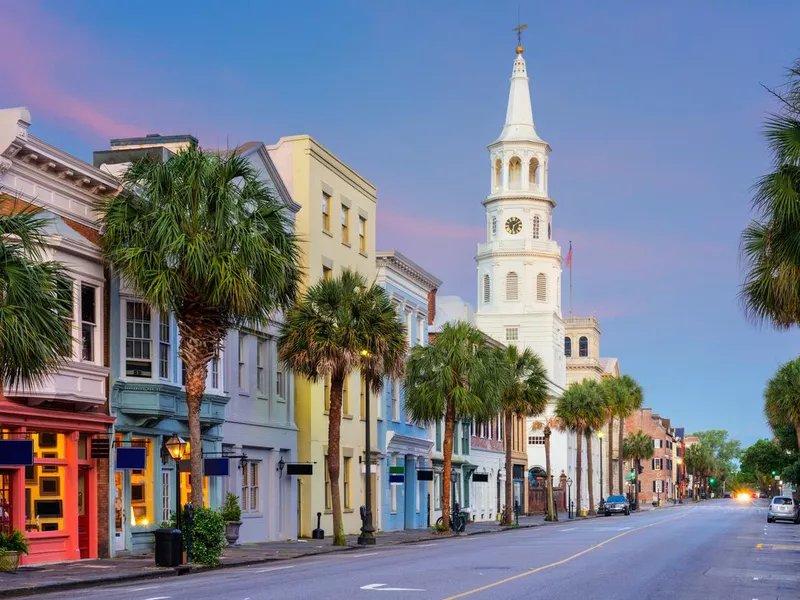
SeanPavonePhoto / Getty Images
Percent holding advanced degrees: 11.2
Median household income: $52,306
Bottom Line for South Carolina

BSPollard / Getty Images
This coastal state is also seeing an influx of new residents, and while housing is still affordable, things like utilities, groceries and healthcare are creeping up.
Cities like Charleston have a strong labor force, and the state overall is doing well due to its move from agriculture to tech.
Residents 60 years old or older can attend any state-funded college or university for free. South Carolina has 61 colleges, including eight historically Black institutions.
31. Utah
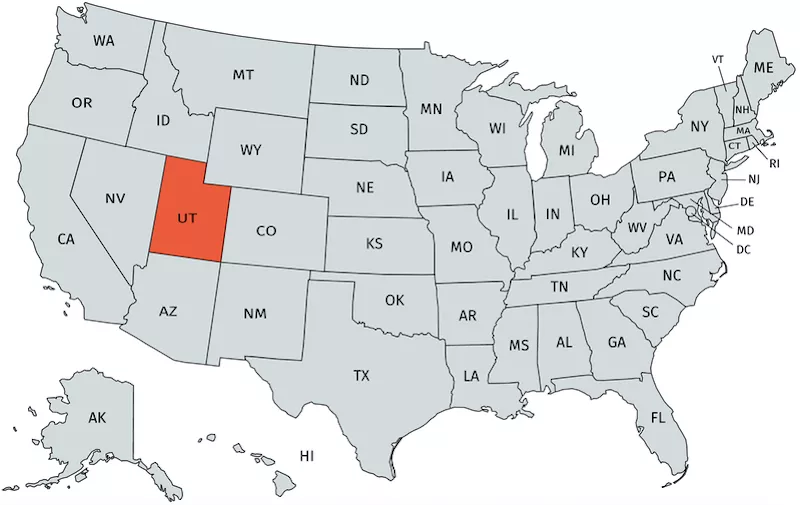
mapchart.net
Population: 3,161,105
Capital: Salt Lake City
Utah Facts and Figures

Aaron Hawkins / Getty Images
Percent holding advanced degrees: 11.3
Median household income: $71,621
Bottom Line for Utah

Getty Images
Utah had the second-highest GDP growth among the states in 2017 and also ranks in the top five states that are home to startup companies.
It has been called the "Wall Street of the West" by Goldman Sachs, and the professional and business services, health-care and construction fields are expected to increase in the coming years.
Major construction projects such as the redevelopment of the Salt Lake City International Airport and an Amazon fulfillment center are expected to add even more revenue to the state.
30. Arizona
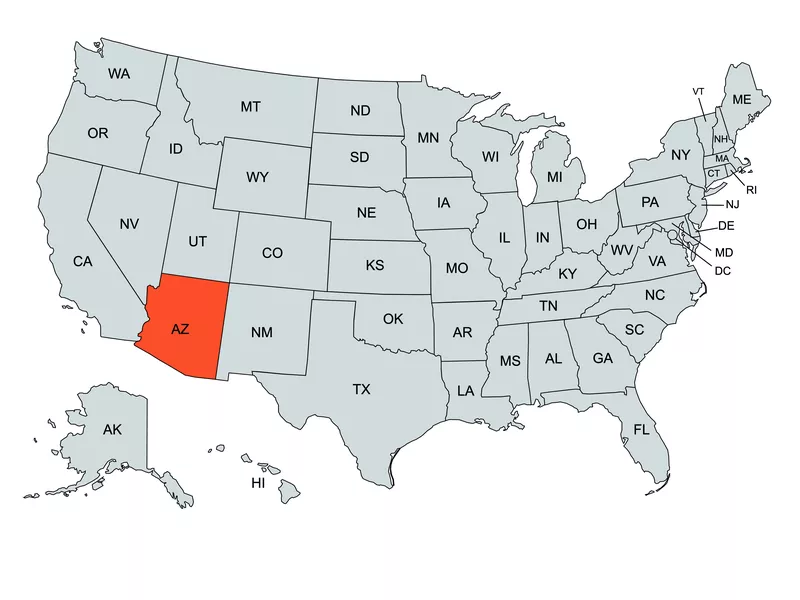
mapchart.net
Population: 7,151,502
Capital: Phoenix
Arizona Facts and Figures
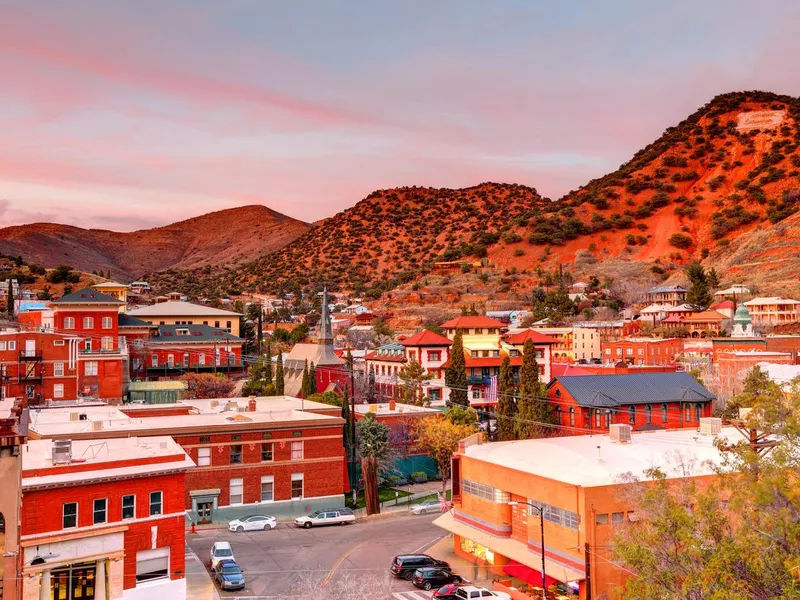
DenisTangneyJr / Getty Images
Percent holding advanced degrees: 11.3
Median household income: $59,246
Bottom Line for Arizona
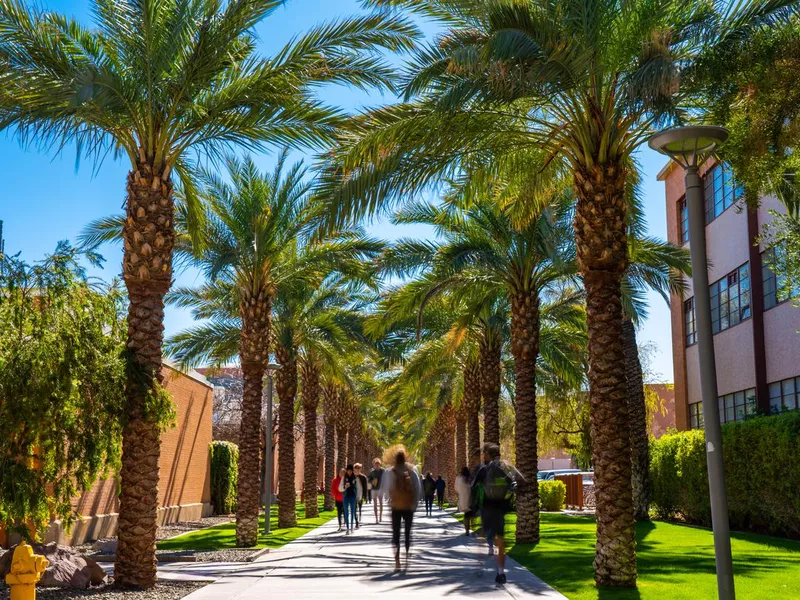
yongyuan / Getty Images
It's always warm in Arizona — sometimes a little too warm — but it is a desert, after all. The bigger cities do get pricey, but the state is still about 5 percent less expensive than the national average.
Arizona is home to many tech startups as well as aerospace, electronics and tourism businesses.
There are 48 universities and colleges all around the state in various environments, from mountains to deserts.
29. Florida
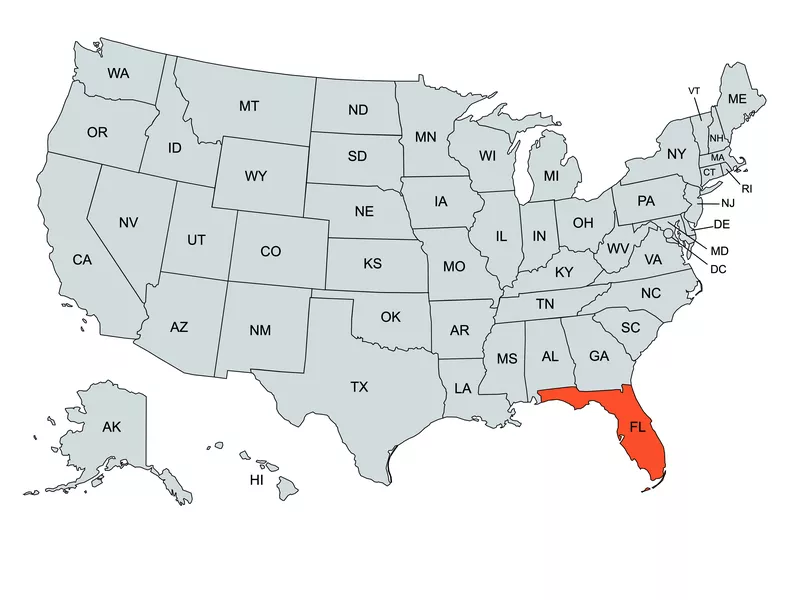
mapchart.net
Population: 21,538,187
Capital: Tallahassee
Florida Facts and Figures
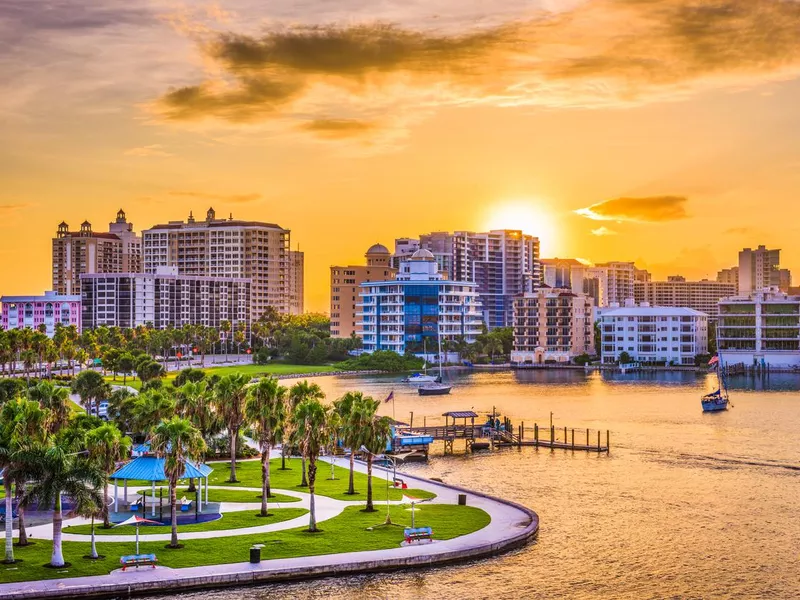
Sean Pavone / Getty Images
Percent holding advanced degrees: 11.4
Median household income: $55,462
Bottom Line for Florida
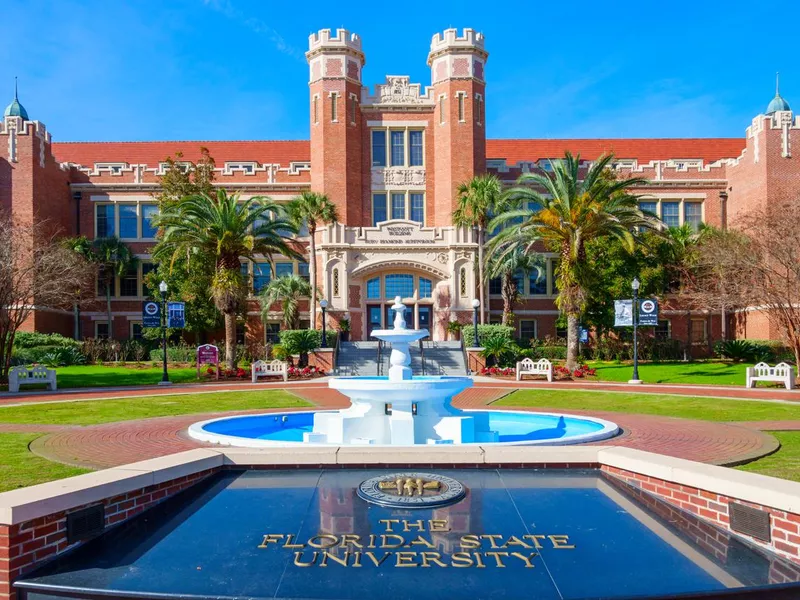
benedek / Getty Images
With its low taxes, lack of income tax, and cheap housing (outside of the big cities), Florida has become a destination for families and retirees alike.
Due to its year-round warm weather and snowbirds (people who come in from other states during the winter), tourism is one of its biggest industries.
Of its 372 colleges and universities, Florida State University ranks 55 in the top of colleges in the country.
28. Nebraska
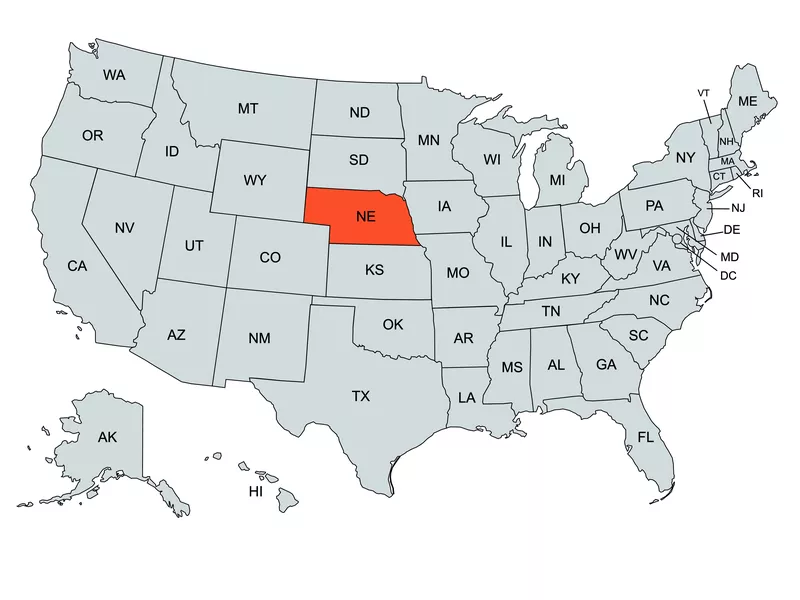
mapchart.net
Population: 1,961,504
Capital: Lincoln
Nebraska Facts and Figures

Davel5957 / Getty Images
Percent holding advanced degrees: 11.4
Median household income: $59,566
Bottom Line for Nebraska
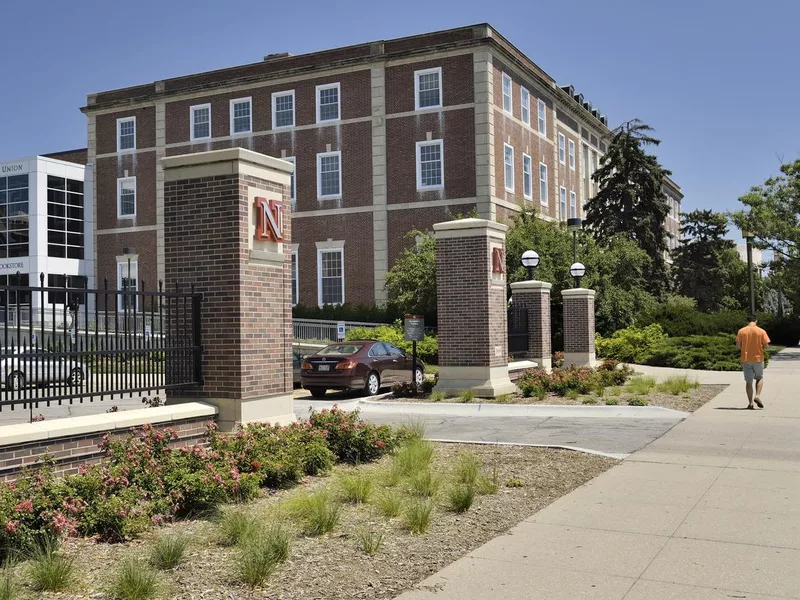
RiverNorthPhotography / Getty Images
A top 10 state for well-being and a great place for raising a family, the cost of living in Nebraska is over 20 percent lower than the national average due mostly to its low population.
The state has 31 places of higher learning, including excellent community colleges, private colleges and universities, and the highly ranked Bellevue University and Concordia University.
27. Hawaii
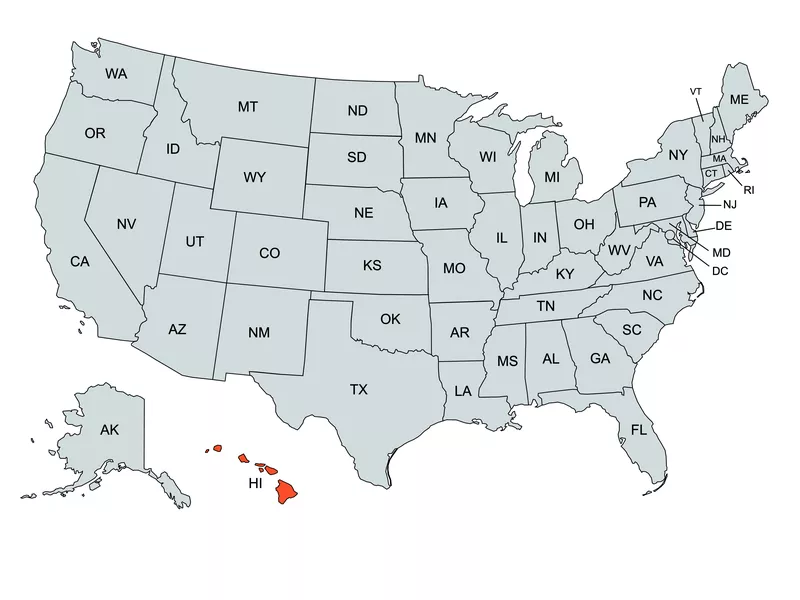
mapchart.net
Population: 1,420,491
Capital: Honolulu
Hawaii Facts and Figures

okimo / Getty Images
Percent holding advanced degrees: 11.6
Median household income: $81,275
Bottom Line for Hawaii

Vanessa Nunes / Getty Images
Tourism is the main industry in Hawaii. It contributes $1.8 billion in tax revenue.
The state is rated number one in health care by U.S. News & World Report, and many of the state’s largest employers are health-care providers.
Other top industries include defense and education. Along with Vermont, Iowa, New Hampshire and North Dakota, Hawaii has the lowest unemployment rates in the country.
26. Alaska
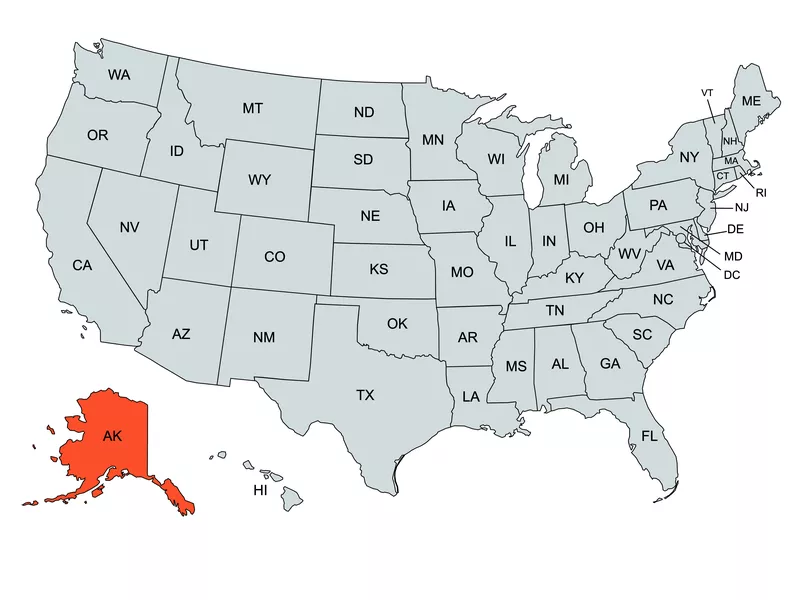
mapchart.net
Population: 733,391
Capital: Juneau
Alaska Facts and Figures
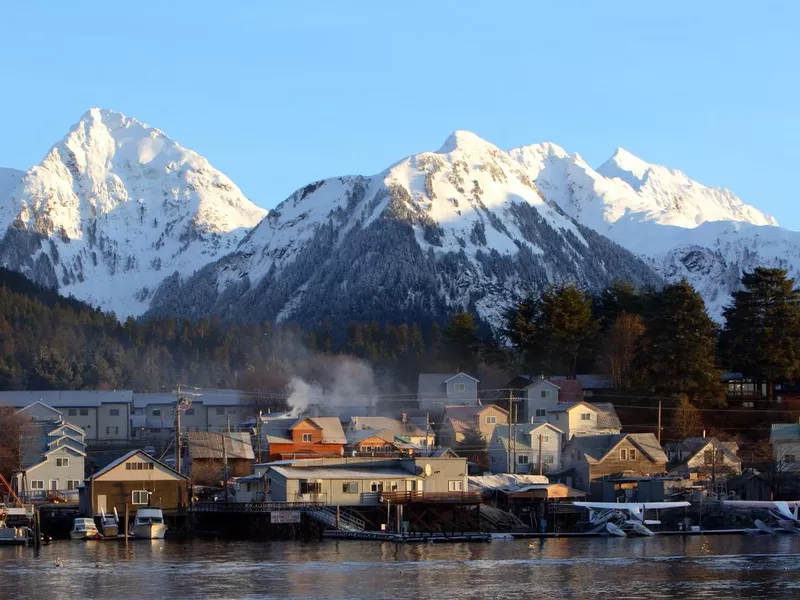
filo / Getty Images
Percent holding advanced degrees: 11.7
Median household income: $74,346
Bottom Line for Alaska
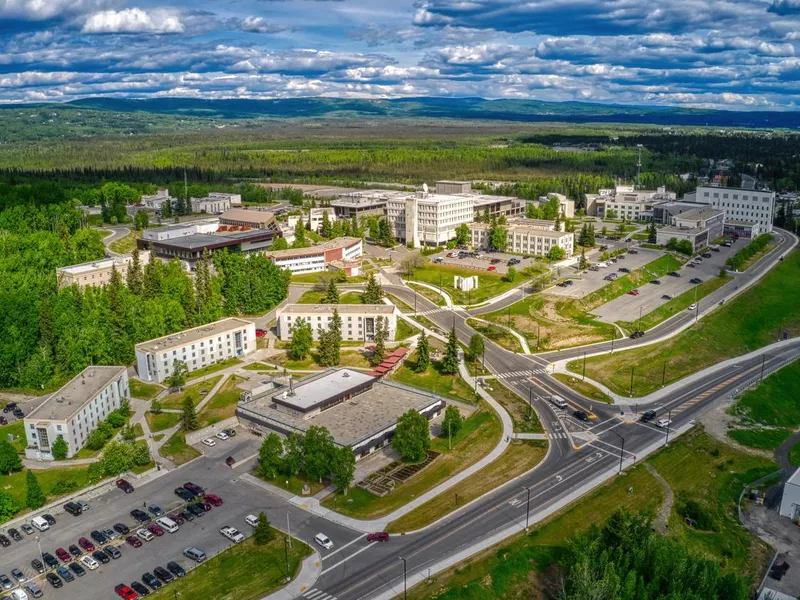
Jacob Boomsma / Getty Images
If you love the outdoors, Alaska has everything from mountains to forests and tundra to explore, but you should be prepared for months of extremely cold weather and a lack of sunshine in the winter.
Jobs are plentiful in Alaska in petroleum, natural gas, coal, precious metals, fishing and seafood processing, lumber and tourism.
The Alaska Commission on Postsecondary Education gives funds from the Alaska Education Grant to low-income students so they can attend one of the state's 10 colleges or universities.
25. Missouri
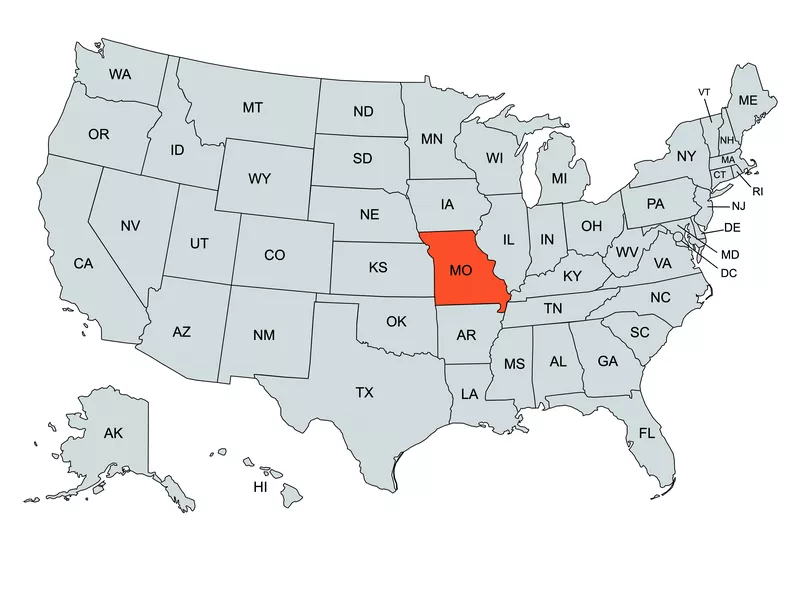
mapchart.net
Population: 6,154,913
Capital: Jefferson City
Missouri Facts and Figures

Art Wager / Getty Images
Percent holding advanced degrees: 11.8
Median household income: $54,478
Bottom Line for Missouri
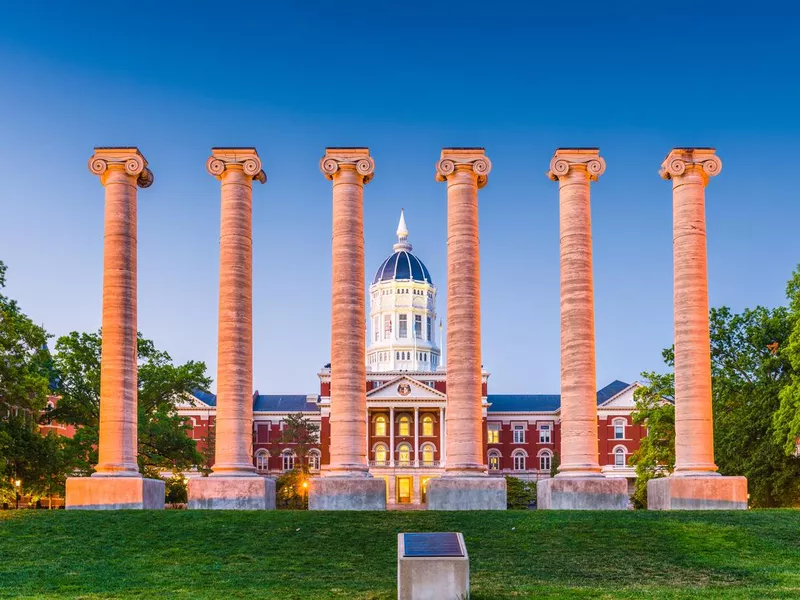
Sean Pavone / Getty Images
The overall cost of living in Missouri is one of the lowest in the country, and jobs are plentiful in biotech, retail, service, and business management.
There are 67 colleges and universities in Missouri. These include massive research universities, medium-sized private universities and quaint liberal arts colleges.
If you come to the state for education, you will find just the right place for you.
24. North Carolina
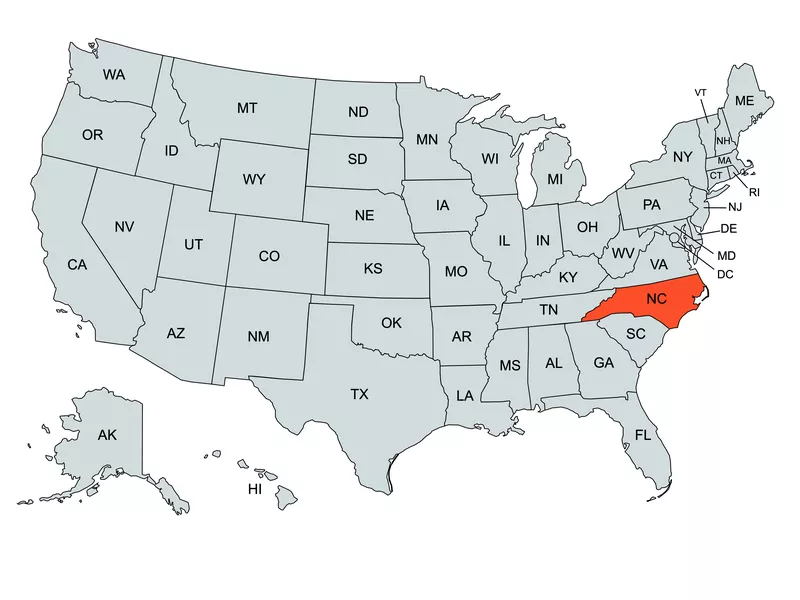
mapchart.net
Population: 10,439,388
Capital: Raleigh
North Carolina Facts and Figures
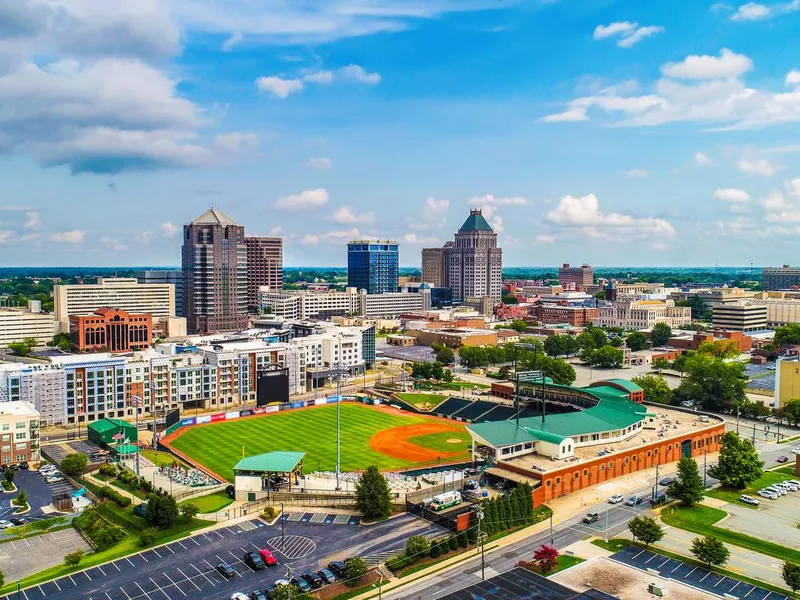
Kruck20 / Getty Images/
Percent holding advanced degrees: 11.8
Median household income: $53,855
Bottom Line for North Carolina

red_moon_rise / Getty Images
North Carolina is another state that is seeing its population expand. This leader in agriculture, banking and manufacturing has a low cost of living compared to several other coastal states. Tourism is also a moneymaking industry here.
Of its 149 colleges and universities, Duke University, the University of North Carolina at Chapel Hill, Davidson, North Carolina State, Wake Forest and Appalachian State University are just some of the state's highly rated schools.
23. Michigan
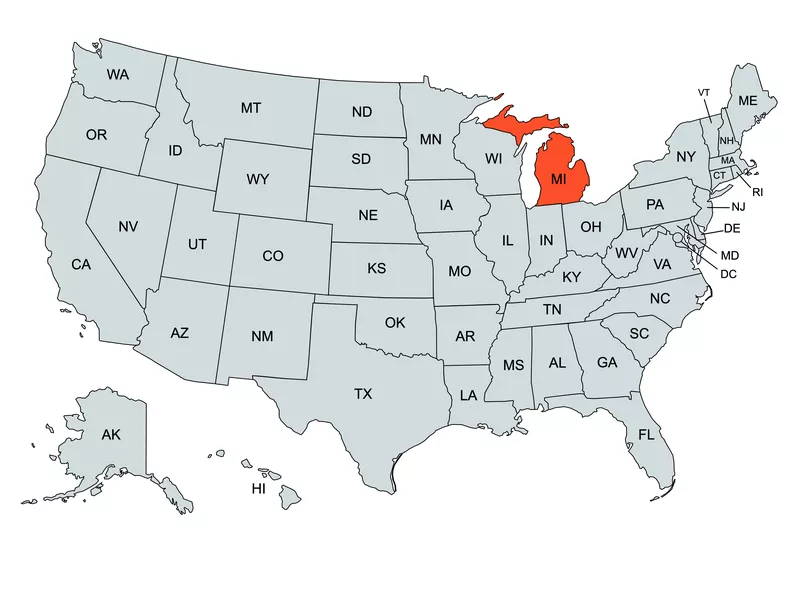
mapchart.net
Population: 9,995,915
Capital: Lansing
Michigan Facts and Figures
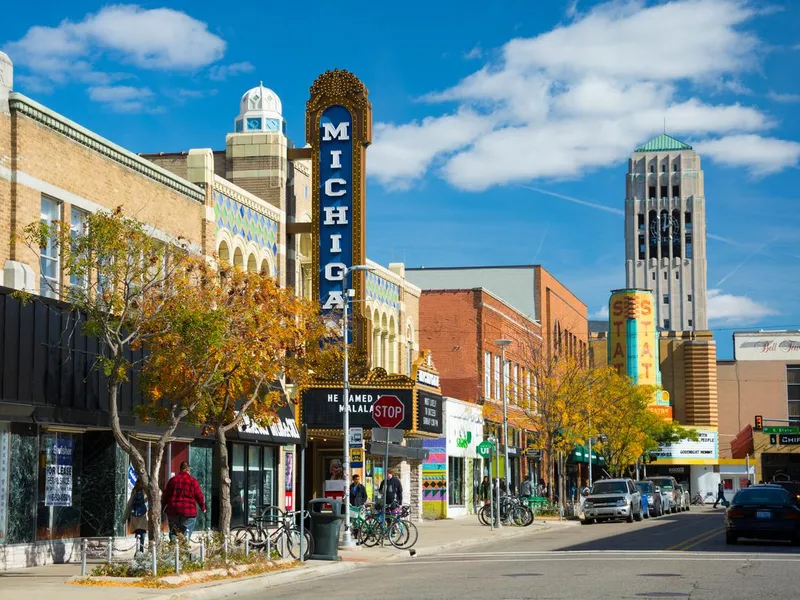
Davel5957 / Getty Images
Percent holding advanced degrees: 11.9
Median household income: $57,144
Bottom Line for Michigan
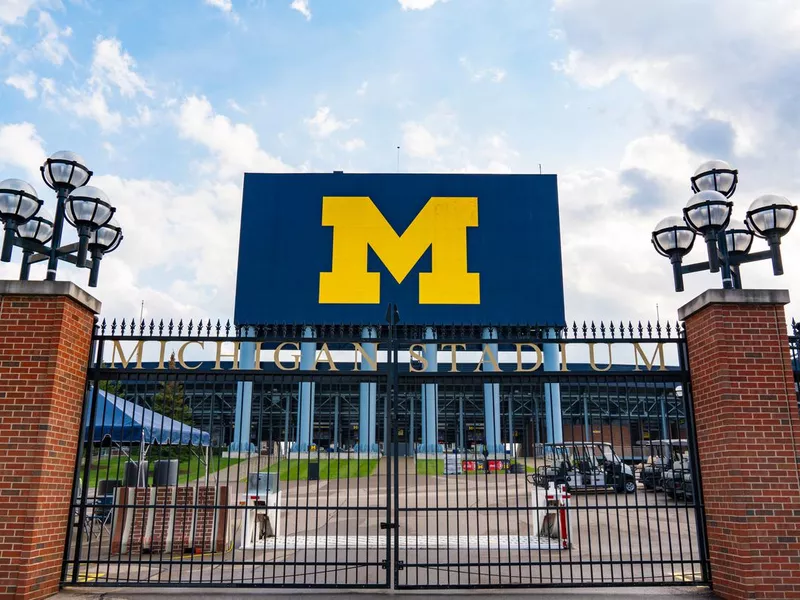
pabradyphoto / Getty Images
Though American automobiles no longer dominate the industry, Detroit has maintained its position as a prominent manufacturing center.
The Automotive Big Three (General Motors, Ford, Fiat Chrysler) remain headquartered in the state, but the transportation, trade, health and education sectors now employ greater numbers of workers. The city’s easy access to Lake Erie also makes it a national shipping hub.
Michigan State and the University of Michigan (pictured) rank No. 2 and No. 3 in the state when it comes to largest employers. Both are considered notable research institutions, and the University of Michigan boasts the sixth-largest academic library in the country.
22. New Mexico
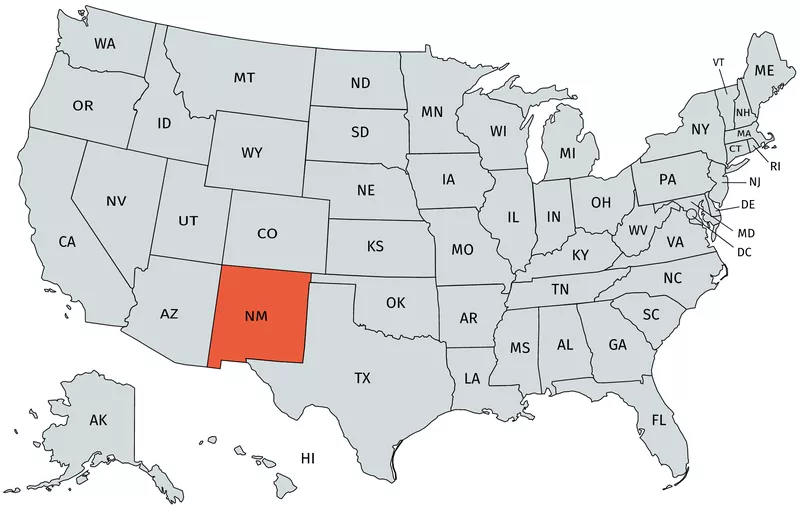
mapchart.net
Population: 2,095,428
Capital: Santa Fe
New Mexico Facts and Figures
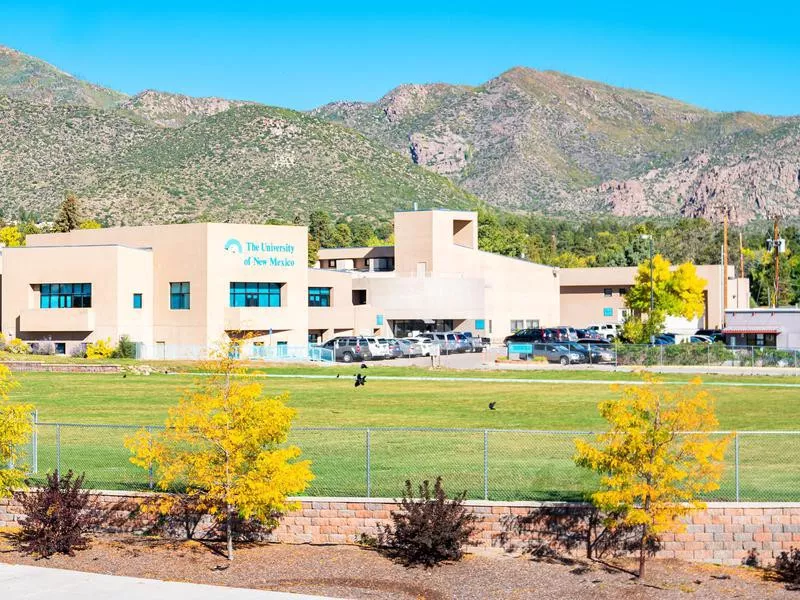
benedek / Getty Images
Percent holding advanced degrees: 12.1
Median household income: $49,754
Bottom Line for New Mexico
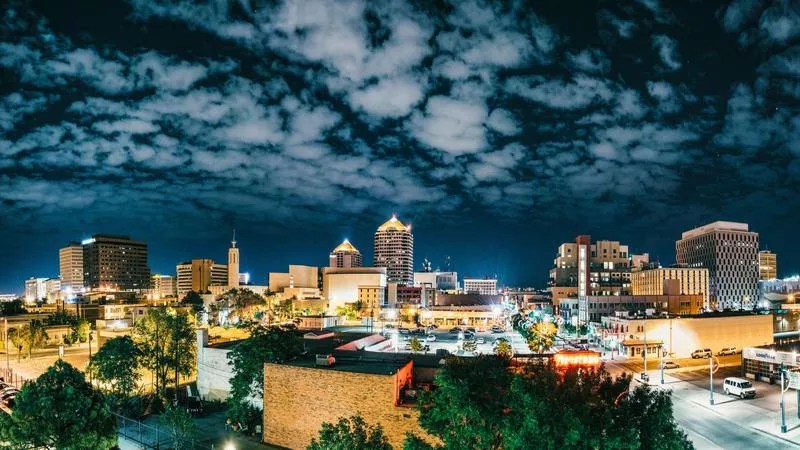
Getty Images
New Mexico has the second-highest number of jobs in high-tech industries. It is known for its oil and gas production and federal government spending.
The state is home to three Air Force bases, White Sands Missile Range and the federal research facilities at Los Alamos National Laboratory and Sandia National Laboratories.
In addition, more than one-third of the land is federally protected and overseen by agencies such as the National Park Service.
21. Kansas
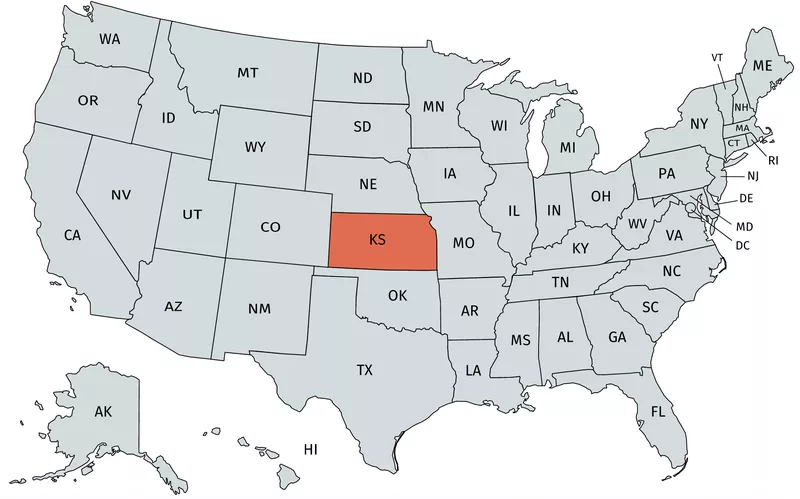
mapchart.net
Population: 2,911,505
Capital: Topeka
Kansas Facts and Figures

BergmannD / Getty Images
Percent holding advanced degrees: 12.4
Median household income: $59,597
Bottom Line for Kansas

Getty Images
Kansas is the top wheat producer in the country and ranks seventh nationally for total agricultural production. Its $20 billion agriculture industry is mostly made up of family-owned farms and ranches.
Other important industries include manufacturing, bioscience, wind energy, professional services, renewable fuels and bioenergy. Mineral production occurs throughout the state, mostly petroleum and natural gas, followed by helium, limestone and salt.
Many of the state’s top employers are in Kansas City, including Garmin and Hallmark.
20. Maine
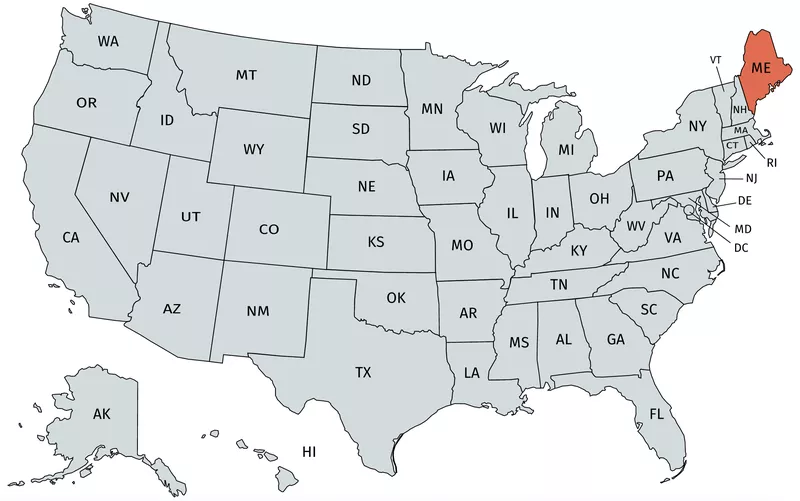
mapchart.net
Population: 1,338,404
Capital: Augusta
Maine Facts and Figures
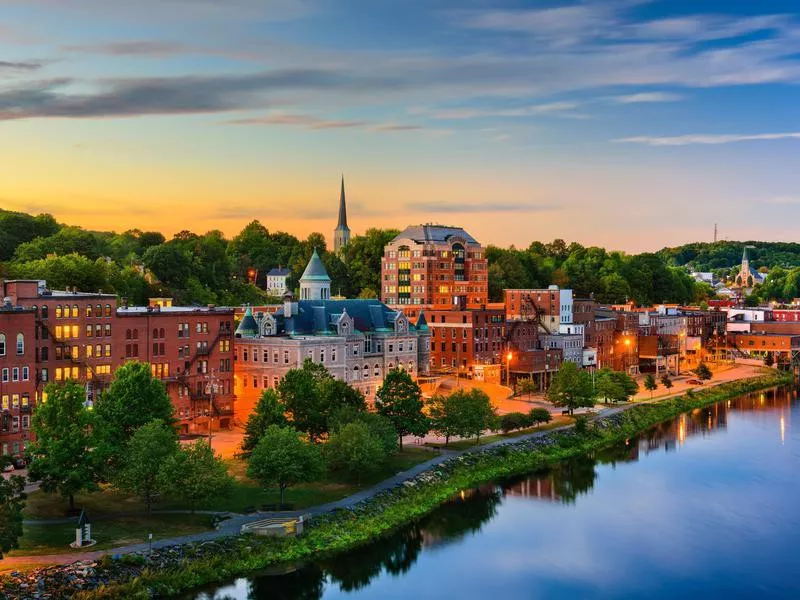
SeanPavonePhoto / Getty Images
Percent holding advanced degrees: 12.4
Median household income: $57,918
Bottom Line for Maine
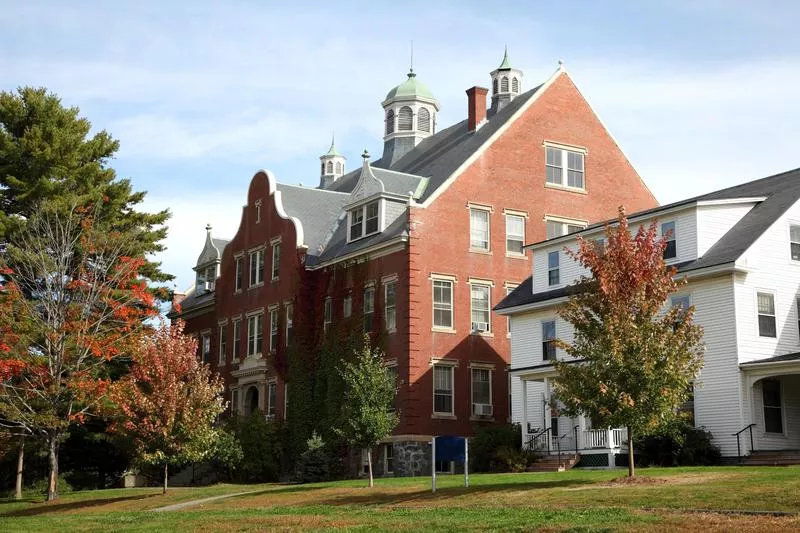
Getty Images
While foresting is the primary industry in Maine (which leads the world in pulp-paper production), seven out of the 10 largest employers in the state are health-care providers.
Maine is of great importance to national transportation as well. Portland is one of New England’s busiest ports.
The University of Maine (pictured), the state’s 10th-largest employer, is also its largest institution of higher education.
19. Georgia
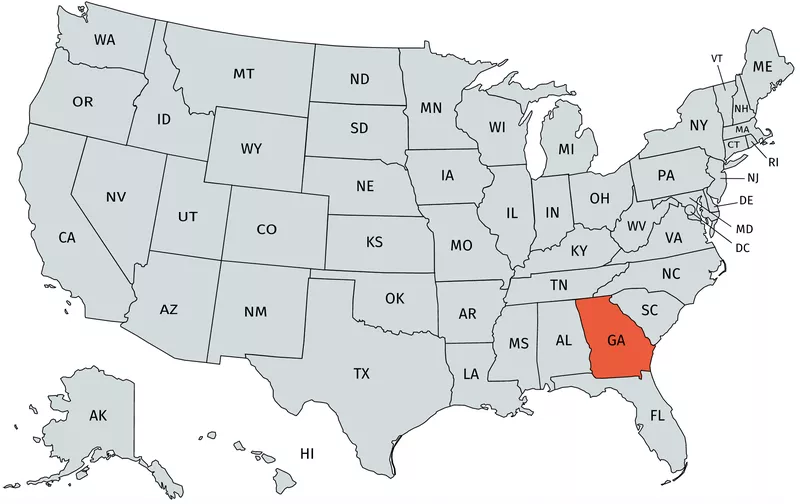
mapchart.net
Population: 10,519,475
Capital: Atlanta
Georgia Facts and Figures

rodclementphotography / Getty Images
Percent holding advanced degrees: 12.6
Median household income: $58,700
Bottom Line for Georgia
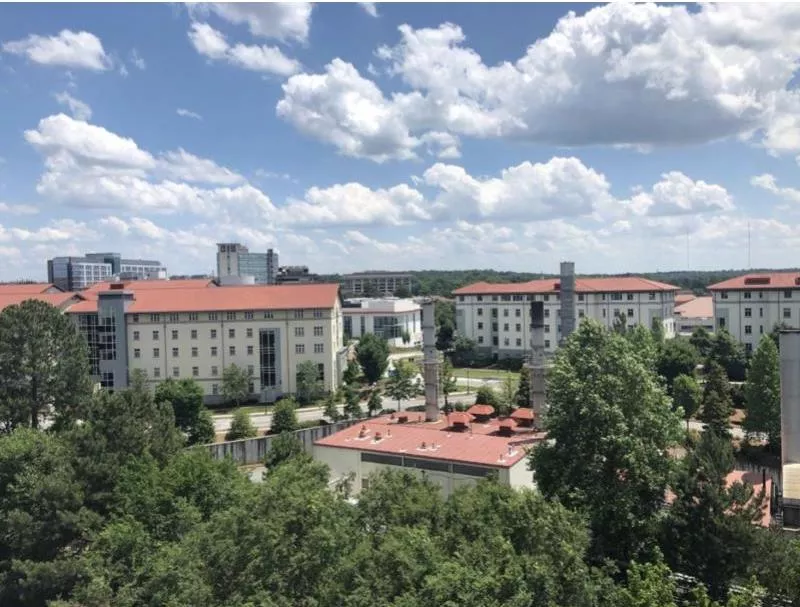
emoryuniversity / Instagram
Traditionally, Georgia is known for its agriculture. While it was originally a top cotton producer, today the state is known more for its peanuts and pecans and leads the nation in producing broiler chickens and eggs.
Emory University (pictured) is one of the largest employers. The school’s affiliated hospital is among the best in the nation for the treatment of cancer and heart disease. Georgia Institute of Technology is considered an incubator for entrepreneurs.
Military, medical and aeronautic fields are the state’s other top industries.
18. Minnesota
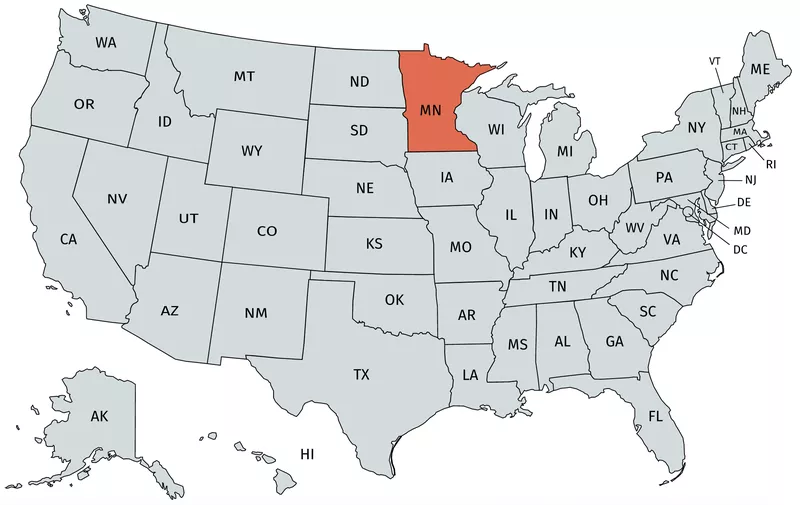
mapchart.net
Population: 5,611,179
Capital: St. Paul
Minnesota Facts and Figures
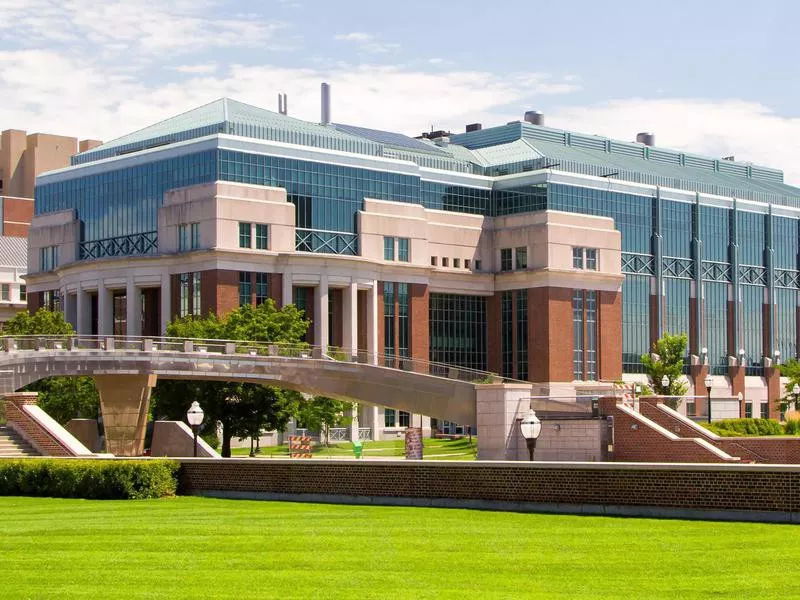
Wolterk / Getty Images
Percent holding advanced degrees: 12.8
Median household income: $71,306
Bottom Line for Minnesota
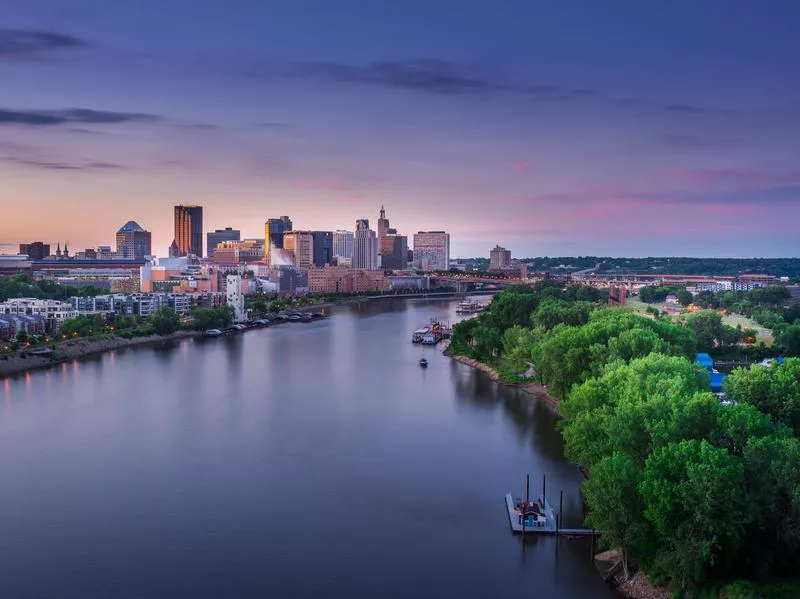
Getty Images
Minnesota is ranked in the top five states for the number of inventor patents.
The Mayo Clinic, one of the largest not-for-profit, academic health systems in the U.S., is based in the state and is one of its largest employers. Retail and manufacturing are two other major industries. Minnesota is home to Fortune 500 companies such as Target, General Mills, 3M and United Health Group.
The University of Minnesota is not only the largest college in the state but also the sixth-largest campus in the U.S.
17. Pennsylvania
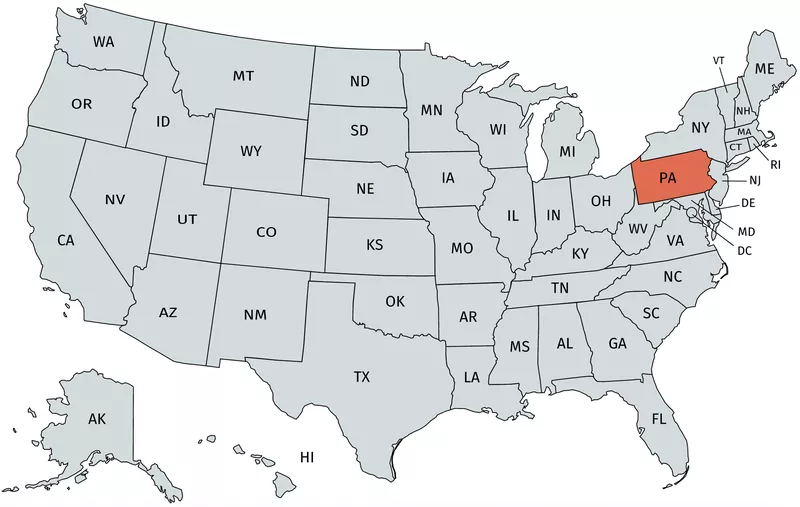
mapchart.net
Population: 12,807,060
Capital: Harrisburg
Pennsylvania Facts and Figures
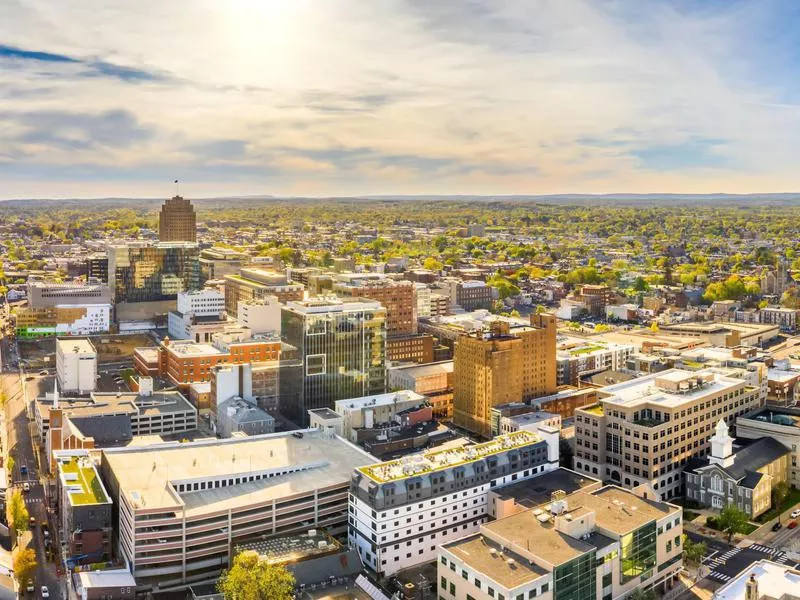
Ultima_Gaina / Getty Images
Percent holding advanced degrees: 12.8
Median household income: $61,744
Bottom Line for Pennsylvania
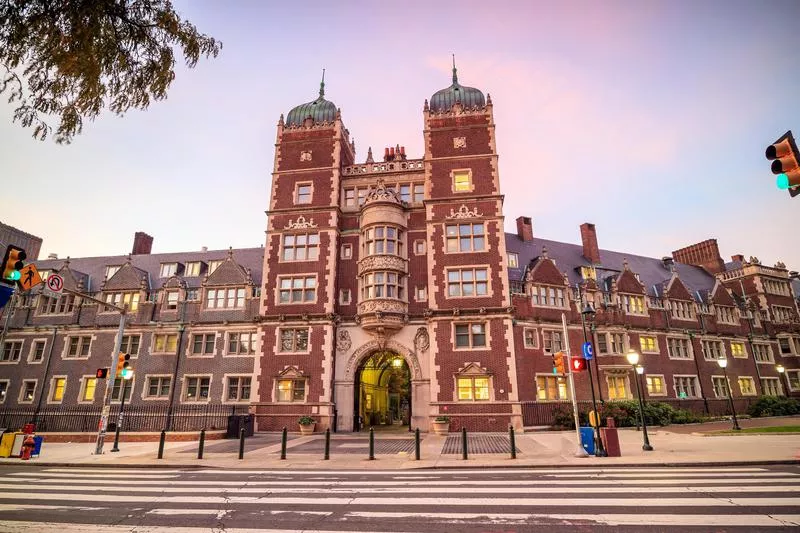
Getty Images
Historically known for its stores of coal and its steel production, Pennsylvania today is known as the snack food capital of the world: Its snack and food sales total more than $5.1 billion annually.
The state is also known for agriculture, particularly mushrooms, which are produced at a rate of 425 million pounds a year.
The commonwealth is home to 187 colleges and universities, including the University of Pennsylvania (pictured) and Penn State, both of which are among the 10 largest employers in the state.
16. California
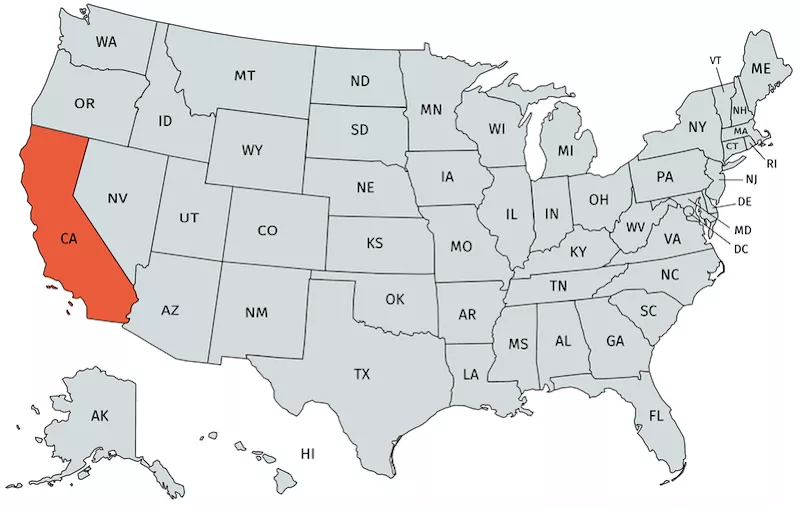
Mapchart.net
Population: 39,557,045
Capital: Sacramento
California Facts and Figures

georgeclerk / Getty Images
Percent holding advanced degrees: 13.1
Median household income: $75,235
Bottom Line for California
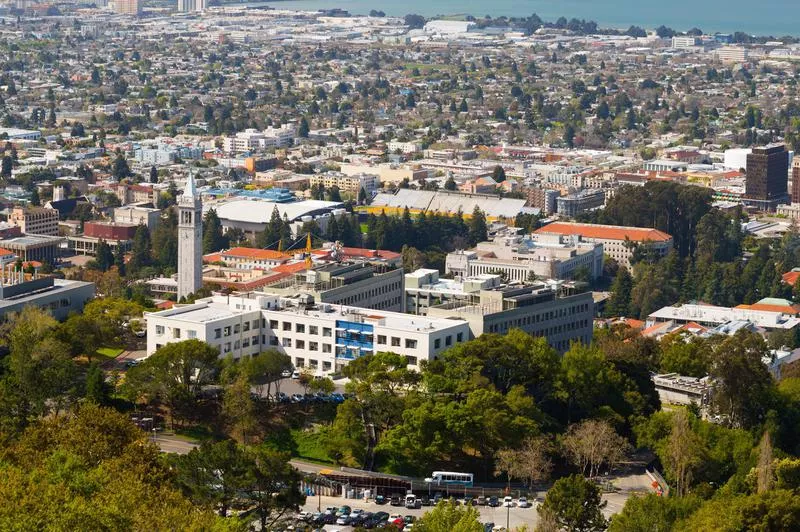
Getty Images
California has the largest economy in the U.S. and ranks in the top five states that employ workers in high-tech jobs.
California also leads the country when it comes to the number of independent inventor patents (tied with Massachusetts, Washington and Oregon). The state is known for its entertainment and fashion industries as well as for being a leader in technology.
The state has 280 colleges and universities, including Stanford, Caltech and the University of California, whose campuses at Berkeley (pictured), Davis and Los Angeles are all in the top 25 research universities in the nation.
15. Oregon
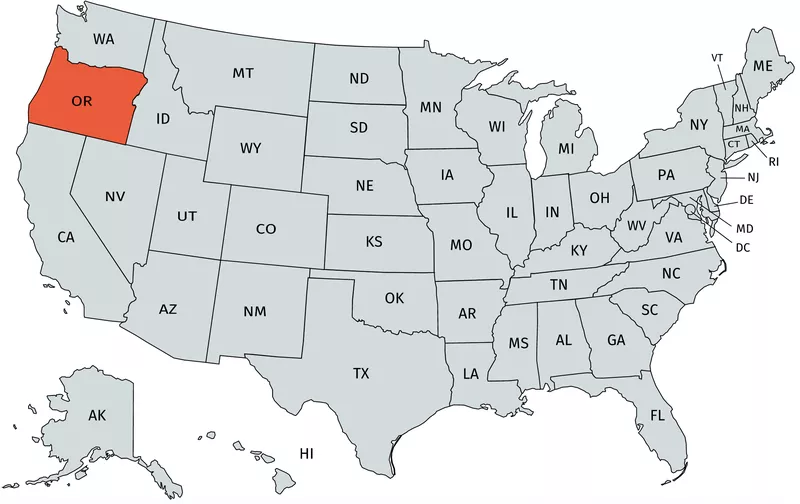
mapchart.net
Population: 4,190,713
Capital: Salem
Oregon Facts and Figures

DianeBentleyRaymond / Getty Images
Percent holding advanced degrees: 13.5
Median household income: $62,818
Bottom Line for Oregon
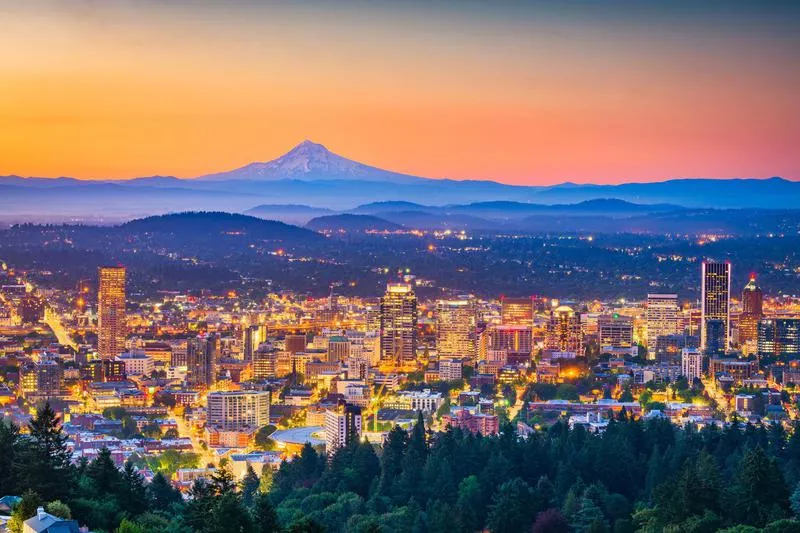
Getty Images
Historically, Oregon has been known for fishing, timber and agriculture. More recently, the state has been transitioning to manufacturing and marketing jobs with an emphasis on technology.
The state’s manufacturing GDP has been rising since 2015. It also has been growing as a winemaking region and is tied with California, Massachusetts and Washington for the most inventor patents.
Intel is the largest employer in the state. Other major employers include Nike, Precision Castparts Corp., Daimler Trucks North America and adidas America.
Oregon is home to Willamette University, which was founded in 1842 and is the oldest university in the Western United States. Oregon Institute of Technology and the University of Portland both rank in the rank in the top 10 in the region.
14. Delaware
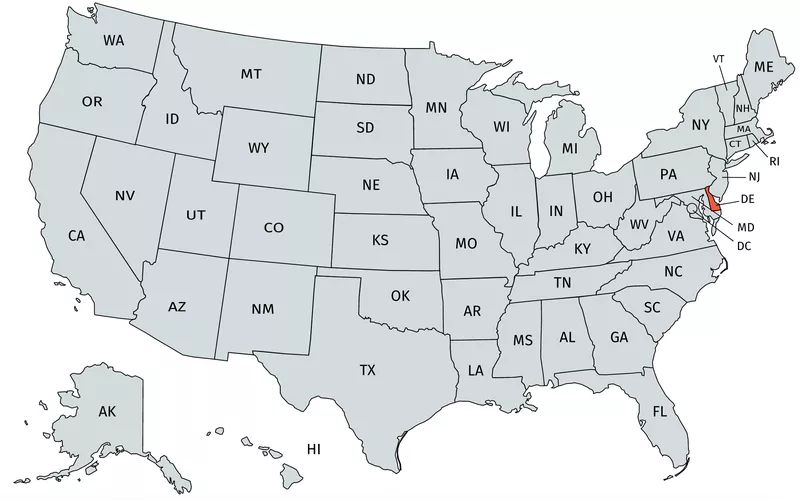
mapchart.net
Population: 967,171
Capital: Dover
Delaware Facts and Figures
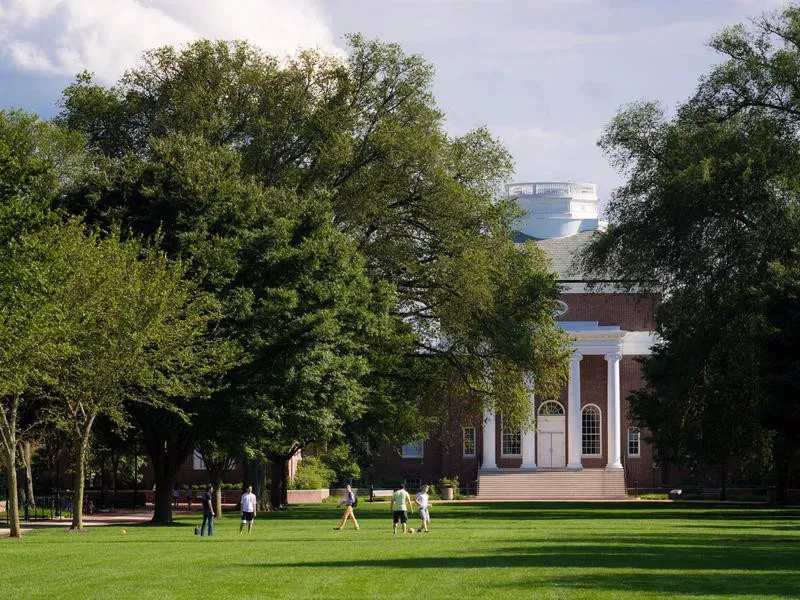
gregobagel / Getty Images
Percent holding advanced degrees: 13.7
Median household income: $68,287
Bottom Line for Delaware
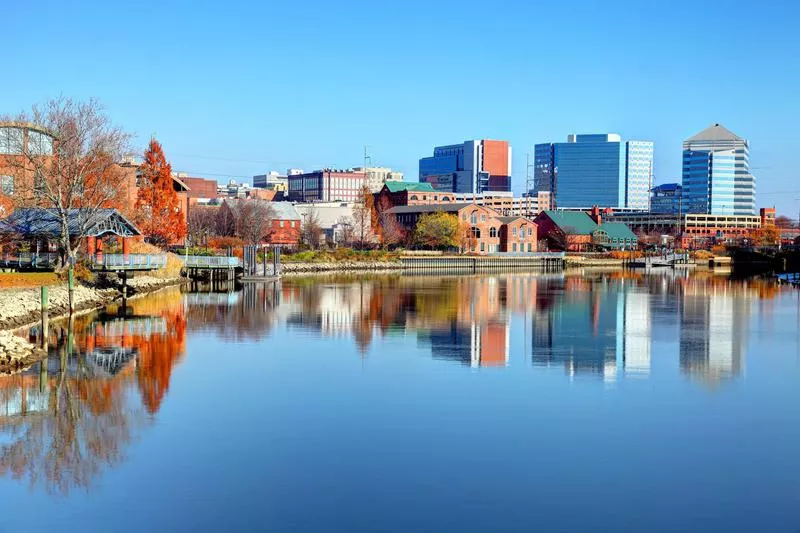
Getty Images
Chemical manufacturing is important to Delaware’s economy. The state is home to DuPont Co., one of the world’s largest chemical manufacturing companies.
Finance and business are also top industries, largely due to the low taxes and pro-business laws that entice so many companies to establish their headquarters here. Health care is another large industry. Many of the top 25 employers are in this field.
The University of Delaware, the state’s oldest and largest institute of higher education is one of two research universities in the state. The school offers 182 advanced degree programs.
13. Rhode Island
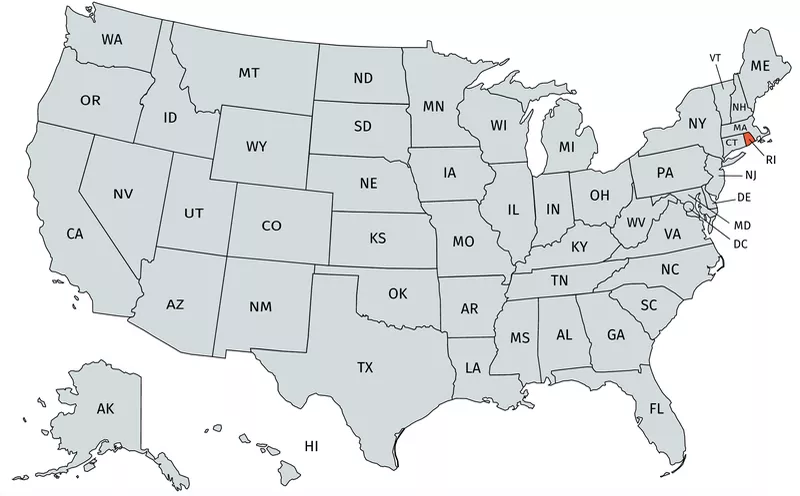
mapchart.net
Population: 1,057,315
Capital: Providence
Rhode Island Facts and Figures
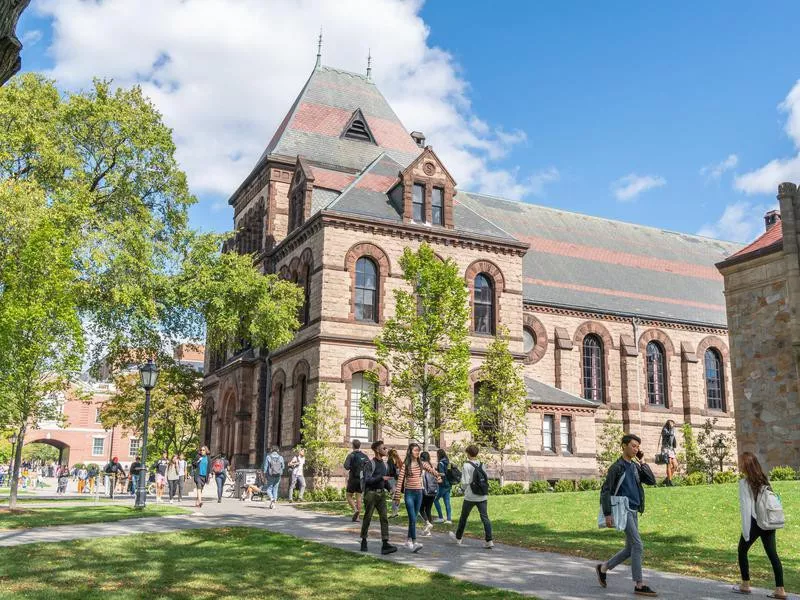
Wolterk / Getty Images
Percent holding advanced degrees: 13.9
Median household income: $67,167
Bottom Line for Rhode Island
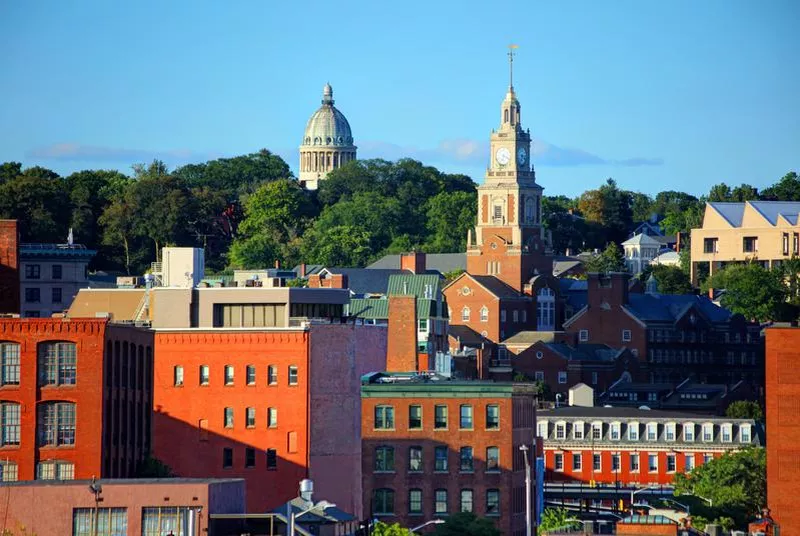
Getty Images
The smallest state in the U.S. is home to strong finance, insurance and real estate sectors. In fact, Providence (pictured) is known as a financial hub for all of New England.
The most common employers in the state are private research facilities, law firms, computer programming companies and repair shops.
Despite Rhode Island's small size, the state is home to 11 universities, including the Ivy League's Brown University, and Rhode Island School of Design, known as one of the country’s best art and design schools.
Rhode Island also works to attract STEM and design graduates through its annual Wavemaker Fellowship, which helps with student loans for up to four years.
12. Illinois
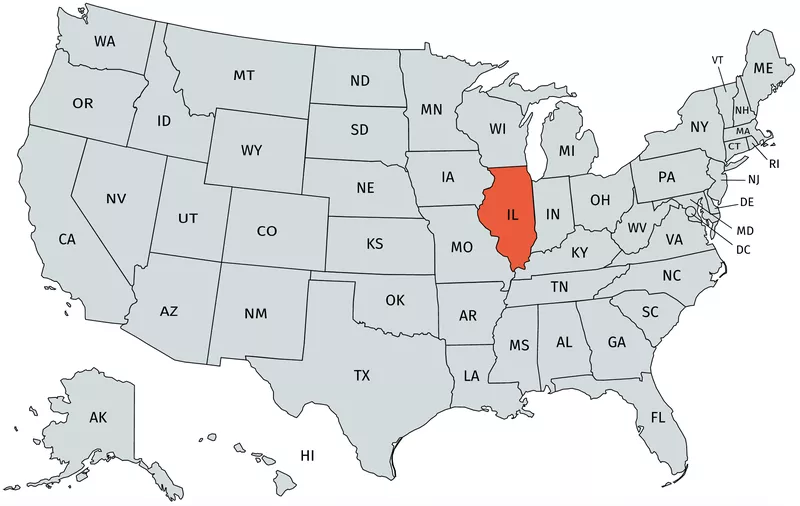
mapchart.net
Population: 12,741,080
Capital: Springfield
Illinois Facts and Figures
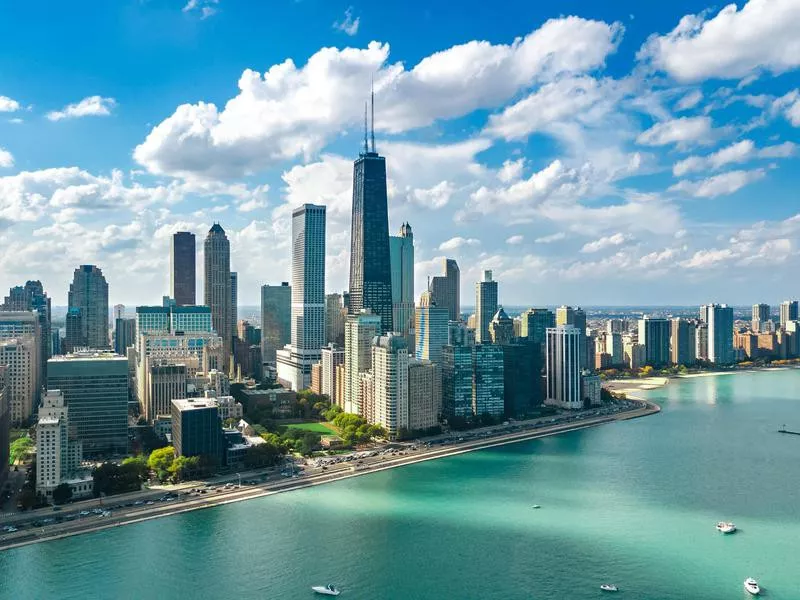
JaySi / Getty Images
Percent holding advanced degrees: 14.1
Median household income: $61,229
Bottom Line for Illinois
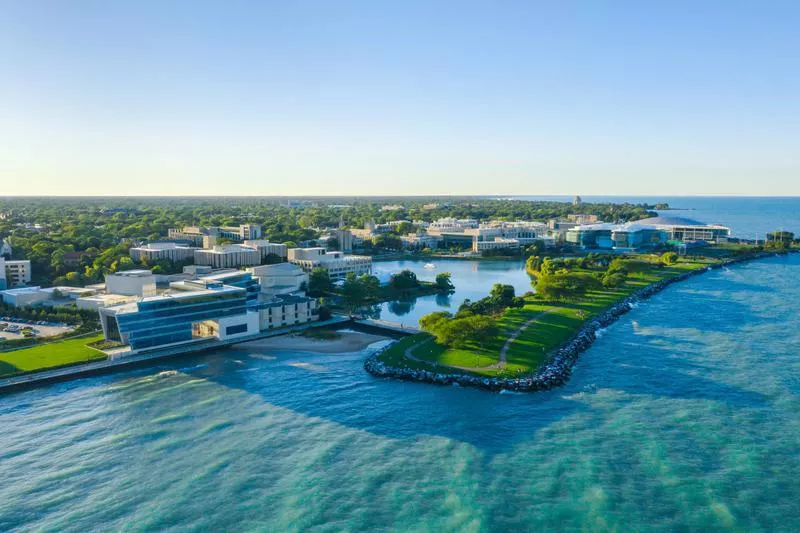
Getty Images
Illinois is home to major corporations such as Allstate, Boeing, Kraft Heinz and Walgreens. Other major industries include education, biotechnology and energy.
The state is a leader in clean energy. It utilizes a significant amount of wind power and produces considerable ethanol fuel.
Its 127 colleges and universities include Northwestern University (pictured), one of the country’s leading private research universities, and the University of Illinois, which also is one of the state’s largest employers over multiple campuses.
11. Washington
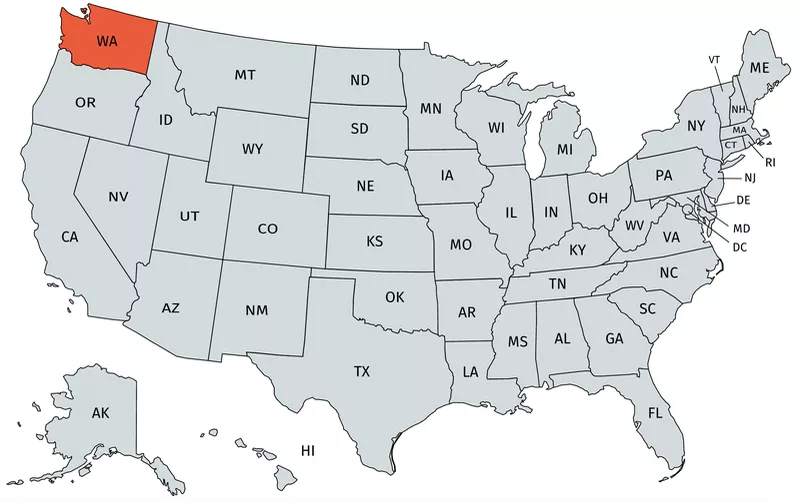
mapchart.net
Population: 7,535,591
Capital: Olympia
Washington Facts and Figures
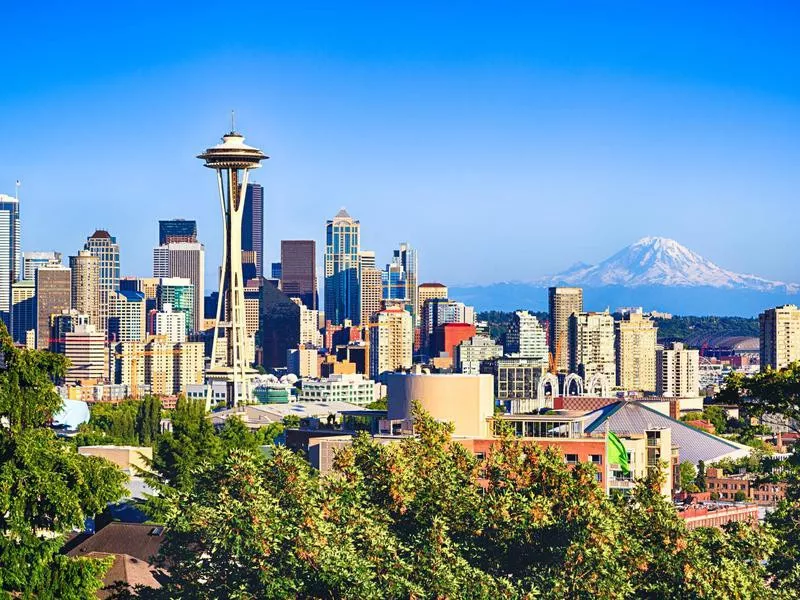
espiegle / Getty Images
Percent holding advanced degrees: 14.2
Median household income: $73,775
Bottom Line for Washington
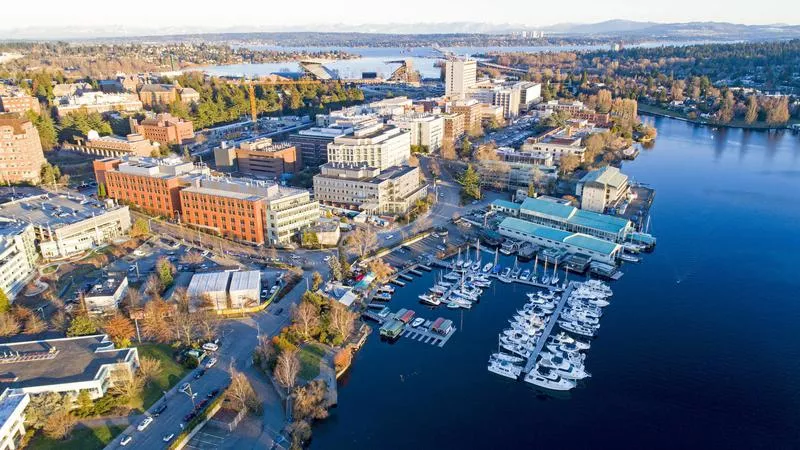
Getty Images
Since 2014, Washington’s economy has been growing. In 2019, it was named the best economy in the nation in a WalletHub study.
Producing about 88 times the number of goods and services as Vermont, Washington's economy is larger than the smallest 24 states, plus Washington, D.C., combined. It is home to both Microsoft and Amazon and ranks in the top five states employing workers in high-tech industries.
While known for information services and retail sectors, Washington also has more STEM workers than any other state and is tied for first with California, Oregon and Massachusetts for the number of patents filed each year.
The lack of state or corporate income tax attracts businesses to the state. In 2017, Washington had the highest GDP growth in the nation.
10. New Hampshire
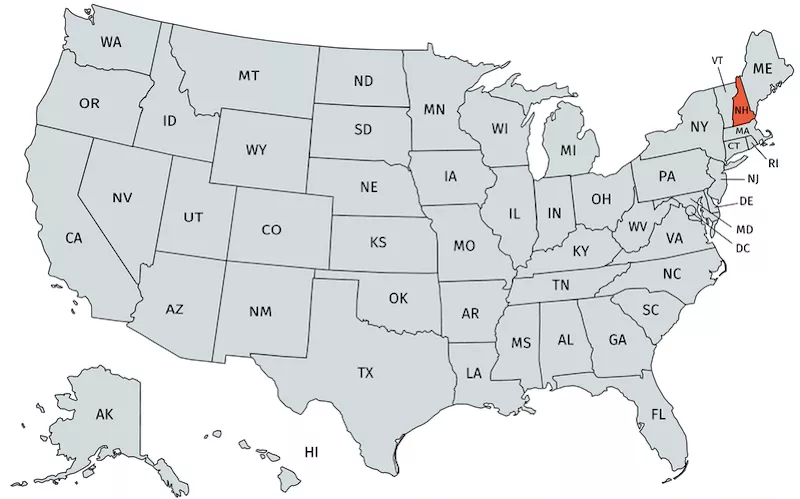
Mapchart.net
Population: 1,356,458
Capital: Concord
New Hampshire Facts and Figures
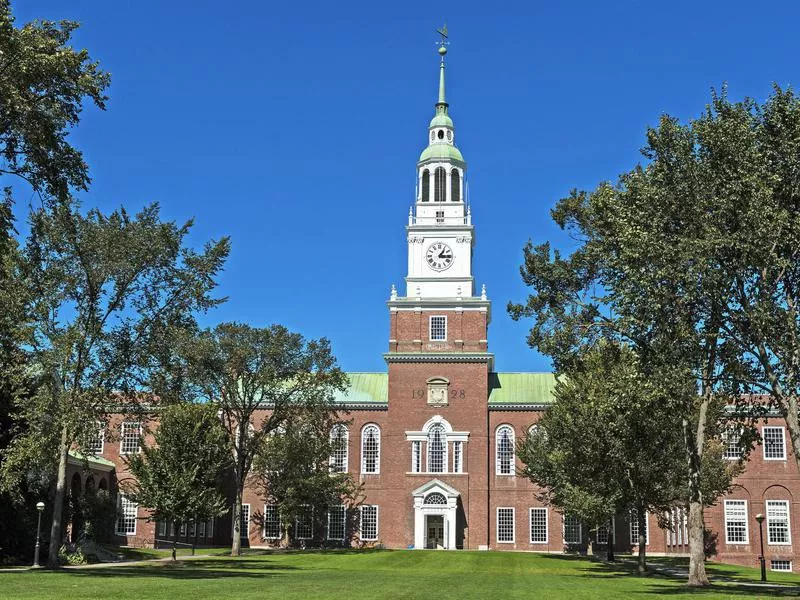
jmoor17 / Getty Images
Percent holding advanced degrees: 14.7 percent
Median household income: $76,768
Bottom Line for New Hampshire
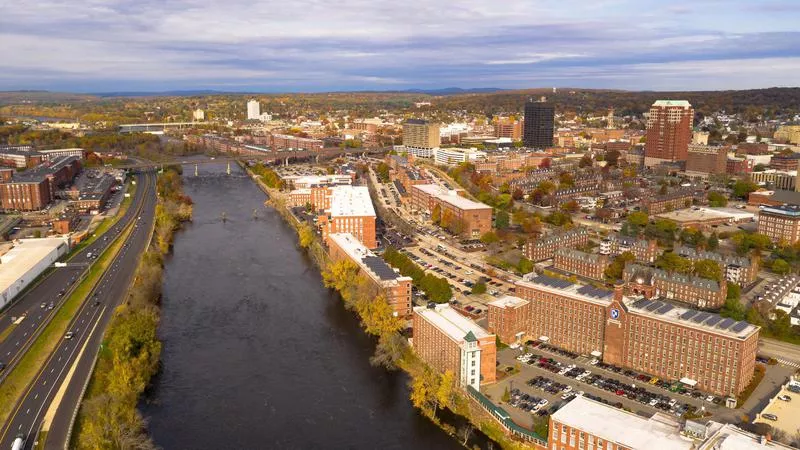
Getty Images
New Hampshire is known for its high-tech industries (ranked No. 3 in a recent WalletHub report), especially electronic component manufacturing. Smart Manufacturing/High Technology (SMHT), the largest economic sector of the state, produces electronic components using high-tech equipment.
The state also is known for biotech and medical research and has more than 300 companies that work in the aerospace and defense industries. It is tied with Vermont, Iowa, Hawaii and North Dakota for the lowest unemployment rate.
The state is home to Dartmouth College, which was founded before the American Revolution. The University of New Hampshire consists of five universities and is the largest postsecondary educator in the state and the second-largest employer.
9. Vermont
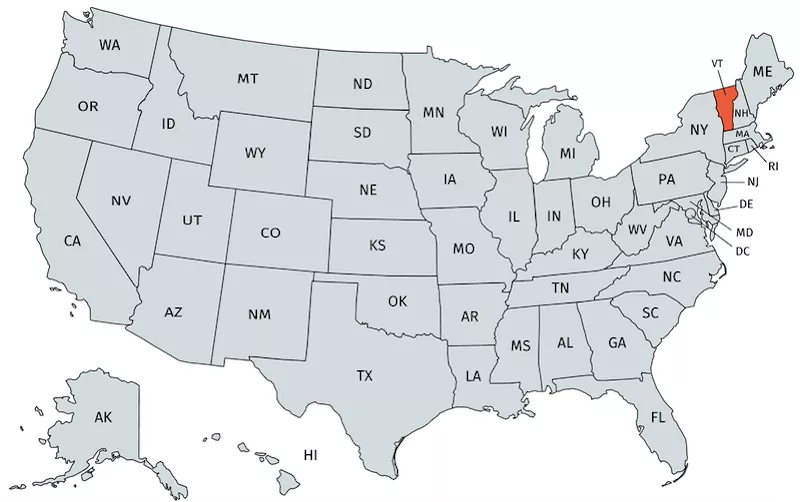
Mapchart.net
Population: 626,299
Capital: Montpelier
Vermont Facts and Figures
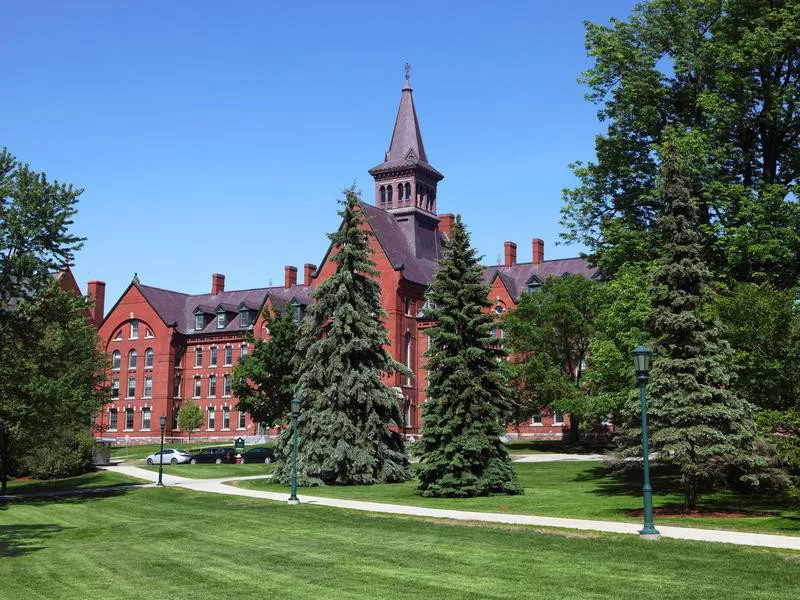
DenisTangneyJr / Getty Images
Percent holding advanced degrees: 15.9
Median household income: $57,808
Bottom Line for Vermont

Getty Images
Vermont may have the smallest economy in the nation, but it is the No. 1 producer of maple syrup. It also is known for its dairy products, especially cheese, and other agricultural products.
The state celebrates its homegrown products such as Ben & Jerry’s Ice Cream (pictured) and Green Mountain Coffee Roasters. Along with Iowa, Hawaii, New Hampshire and North Dakota, Vermont has the lowest unemployment rate in the country.
Burlington’s University of Vermont is the state’s largest institute of higher education, and the university’s medical center is the state’s top employer.
8. Colorado
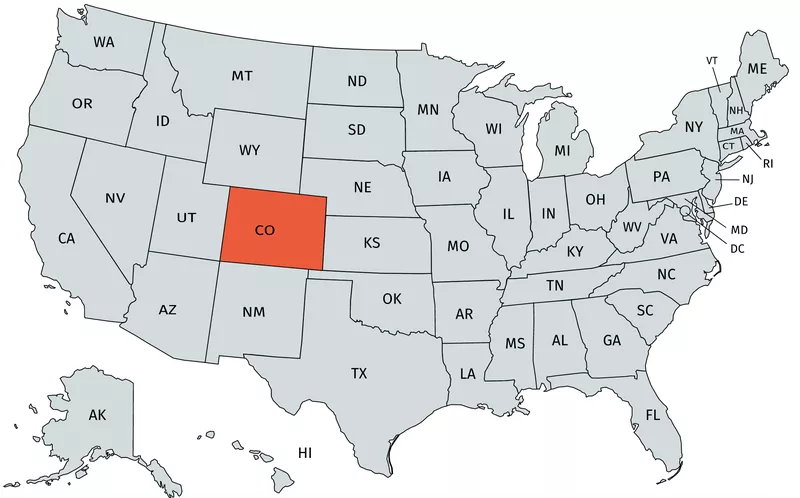
mapchart.net
Population: 5,695,564
Capital: Denver
Colorado Facts and Figures

RoschetzkyIstockPhoto / Getty Images
Percent holding advanced degrees: 16.0
Median household income: $72,331
Bottom Line for Colorado
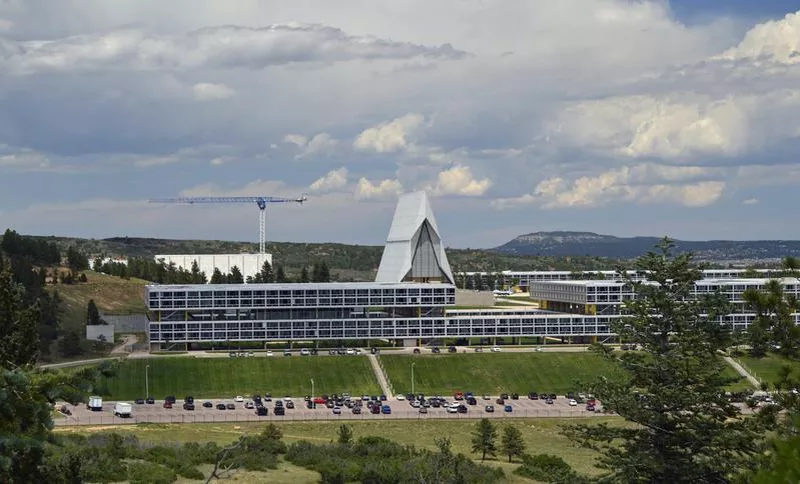
Getty Images
Historically, Colorado’s economy has depended on agriculture, livestock and mining. The state‘s technology sector has been expanding.
U.S. News & World Report recently ranked the state’s economy number one in the nation, giving it high scores for growth and entrepreneurship. WalletHub put Colorado in third place in the nation in terms of startup activity.
The state has 62 colleges and universities, including the United States Air Force Academy (pictured). Several of these are among the state’s largest employers. Denver International Airport and Lockheed Martin Space Systems are other top employers.
7. New Jersey
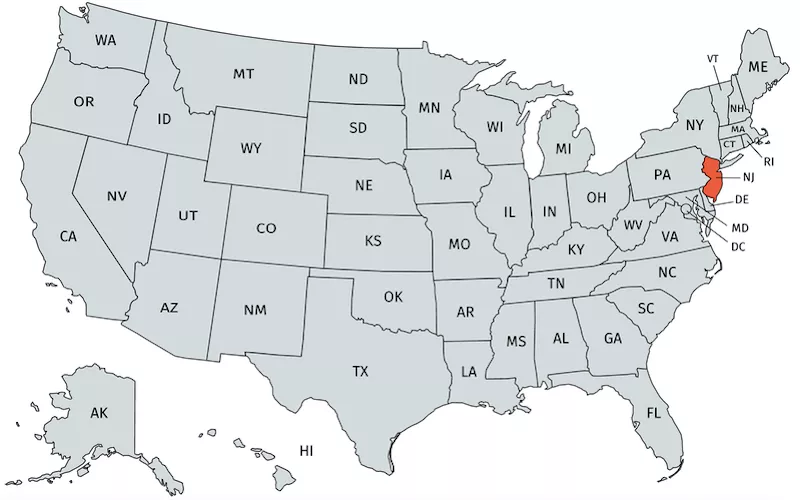
Mapchart.net
Population: 8,908,520
Capital: Trenton
New Jersey Facts and Figures

ChrisBoswell / Getty Images
Percent holding advanced degrees: 16.1
Median household income: $82,545
Bottom Line for New Jersey
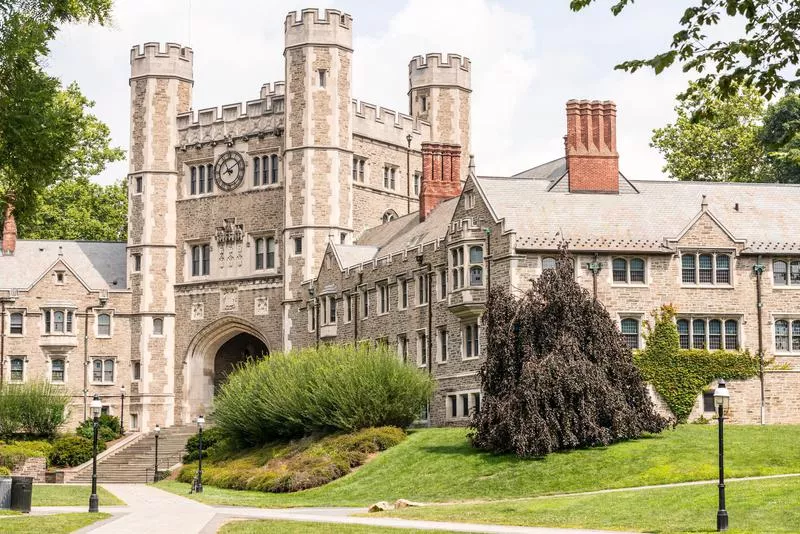
Getty Images
New Jersey is home to more than 5,000 information and technology companies as well as several pharmaceutical and biotech companies. Some of its largest employers include Verizon, Johnson & Johnson and Merck. The state also has a significant tourism industry, based along its Atlantic coast.
New Jersey was the only colony to establish two colleges in colonial periods: Princeton (pictured), which was chartered 1746 as the College of New Jersey, and Rutgers, which was chartered 1766 as Queen’s College.
Only nine were founded in the colonies before the American Revolution.
6. New York
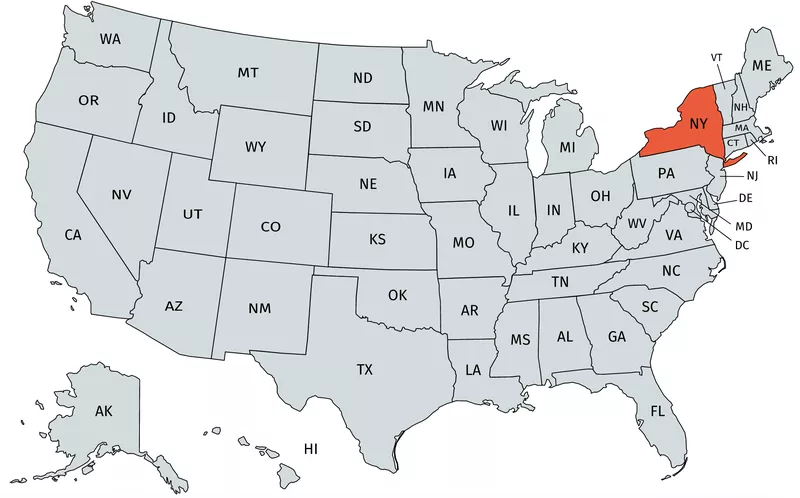
mapchart.net
Population: 19,542,209
Capital: Albany
New York Facts and Figures
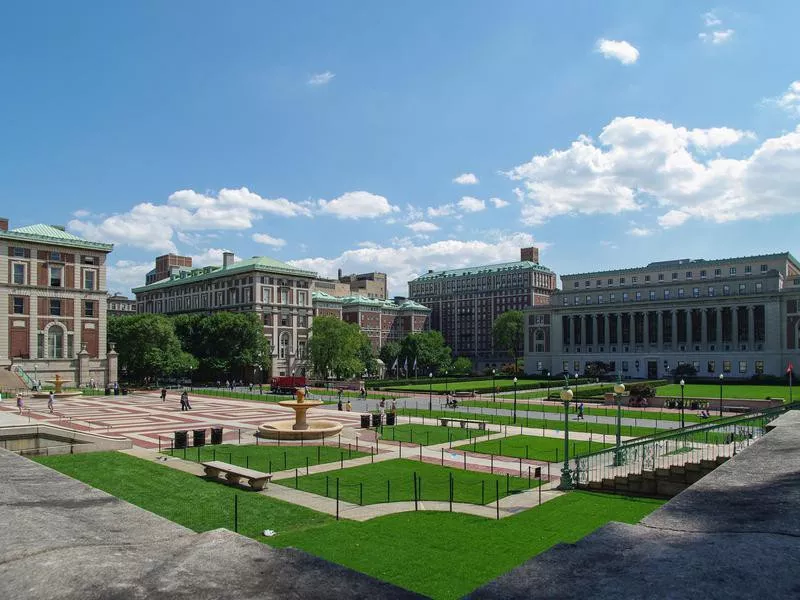
HaizhanZheng / Getty Images
Percent holding advanced degrees: 16.6
Median household income: $68,486
Bottom Line for New York

Getty Images
In addition to being the home of the New York Stock Exchange (the world’s largest), New York City also is the headquarters for half of the 10 largest U.S. banks, including Morgan Stanley, Citigroup and JPMorgan Chase. Tourism and health care are other important industries in the state.
New York City is the most populous city in the U.S., and in 2006, one in four residents had an advanced degree. The state is home to two Ivy League schools (Columbia and Cornell Universities) as well as many other nationally ranked schools.
5. Virginia

mapchart.net
Population: 8,517,685
Capital: Richmond
Virginia Facts and Figures
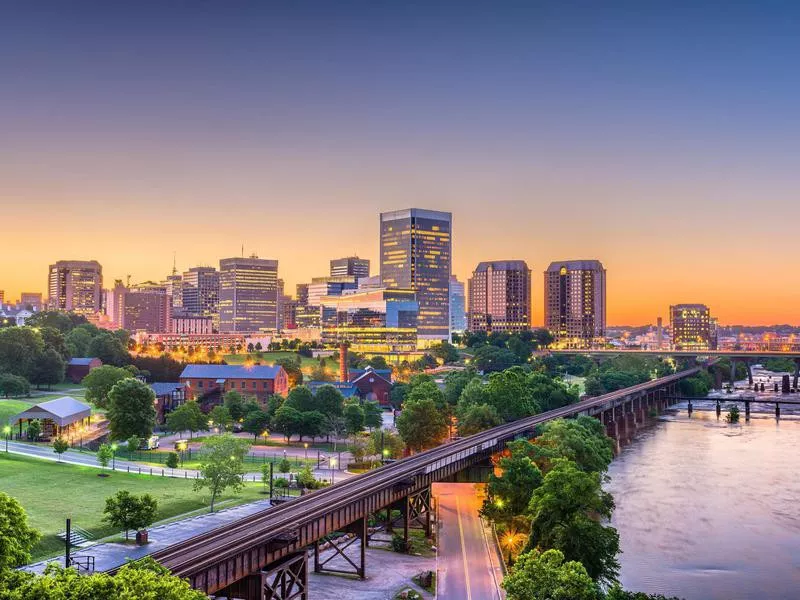
Sean Pavone / Getty Images
Percent holding advanced degrees: 17.2
Median household income: $74,222
Bottom Line for Virginia
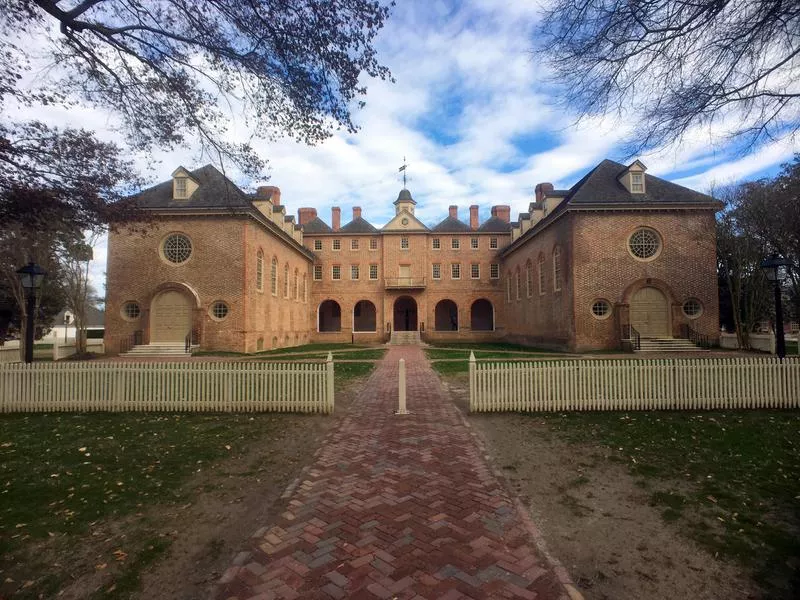
Getty Images
Virginia has a diverse economy, largely separated by region.
The coast is known for shipbuilding, the west has farmland and wineries, and technology companies line the suburban Washington corridor. The north is home to many federal workers who make the commute to Washington, D.C.
Virginia is home to 172 institutes of higher learning, including the nation’s second-oldest, The College of William and Mary (pictured). Virginia Tech is the largest university in the state.
4. Connecticut

Mapchart.net
Population: 3,572,655
Capital: Hartford
Connecticut Facts and Figures
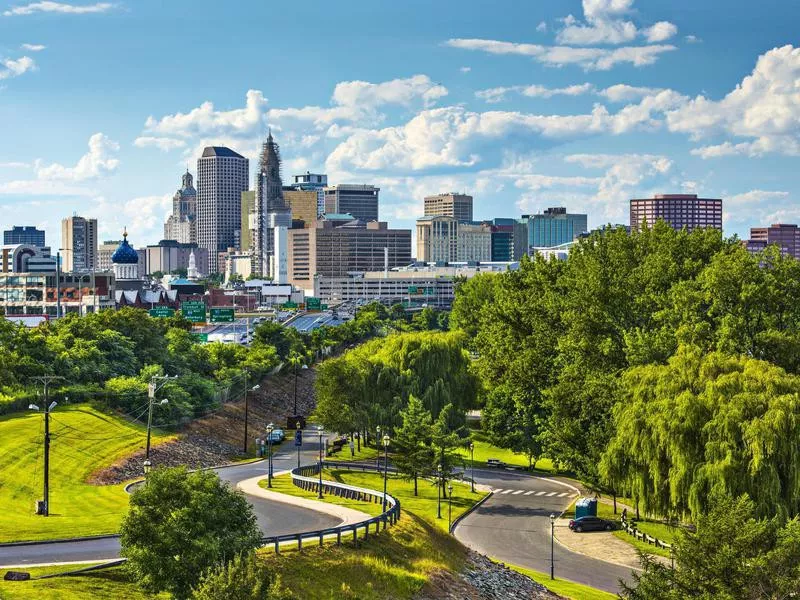
SeanPavonePhoto / Getty Images
Percent holding advanced degrees: 17.8
Median household income: $78,444
Bottom Line for Connecticut
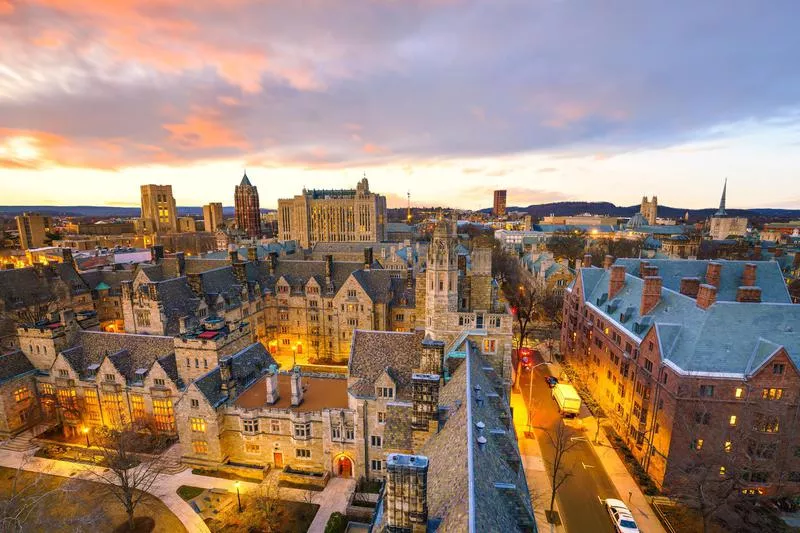
Getty Images
Digital media is one of Connecticut’s top industries (more than 1,200 digital media businesses resided in the state in 2015).
It is also home to the headquarters of several Fortune 500 companies, including Aetna, Cigna and United Technologies (the parent company of Carrier and Otis Elevator).
Other top industries include manufacturing, bioscience, green tech and insurance and financial services.
Yale University (pictured) is the state’s oldest university (founded in 1701) and one of its largest employers.
3. Maryland
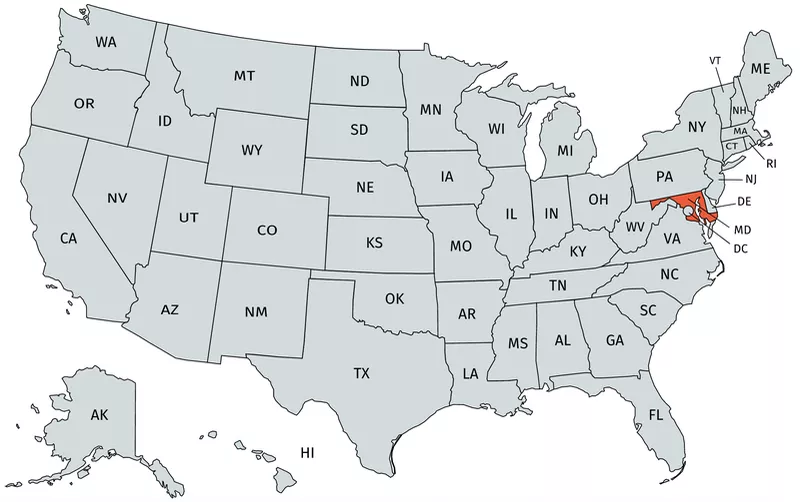
mapchart.net
Population: 6,042,718
Capital: Annapolis
Maryland Facts and Figures
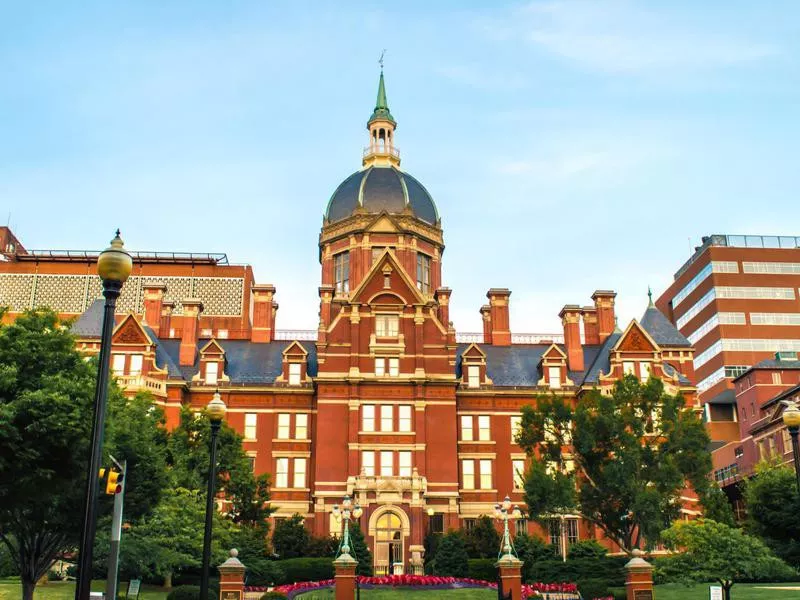
UmerPK / Getty Images
Percent holding advanced degrees: 19.1
Median household income: $84,805
Bottom Line for Maryland
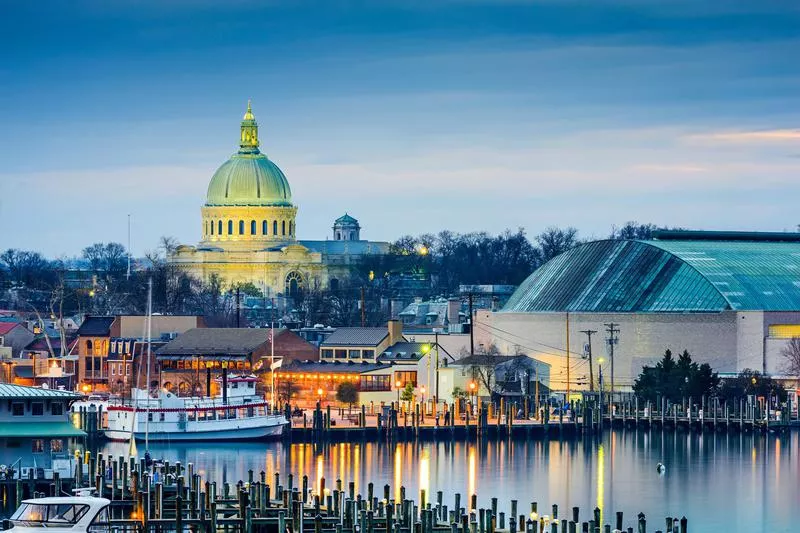
Getty Images
U.S. News & World Report ranked Maryland the sixth-best state in the nation, citing its status as an "aerospace and defense hot spot."
Home to the National Institutes of Health, NASA’s Goddard Space Flight Center, the National Oceanic and Atmospheric Administration and major defense contractors, the state’s economy is boosted not only by information technology, telecommunications, aerospace and defense companies but also by over 60 federal agencies.
The state is known for health care and biotechnology, and is home to Walter Reed National Military Medical Center. With its proximity to the nation’s capital, Maryland also is home to many federal workers who commute daily to Washington, D.C.
Johns Hopkins University and the United States Naval Academy are both located in the state.
2. Massachusetts
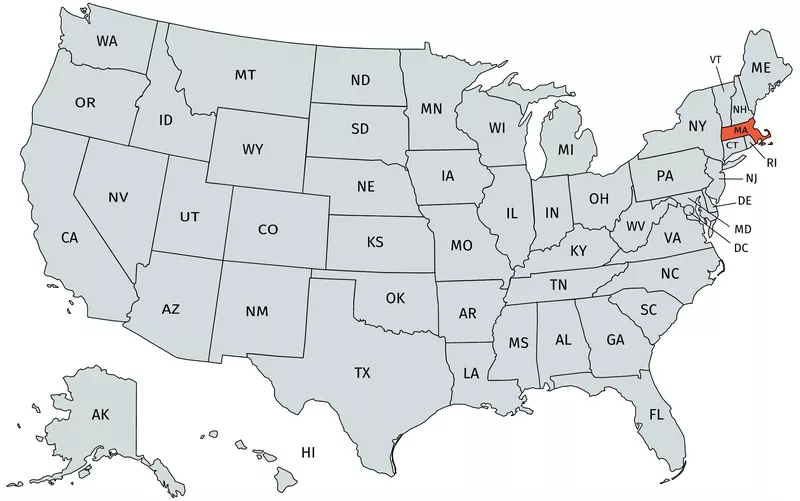
mapchart.net
Population: 6,902,149
Capital: Boston
Massachusetts Facts and Figures

Vladone / Getty Images
Percent holding advanced degrees: 20.3
Median household income: $81,215
Bottom Line for Massachusetts

Getty Images
Massachusetts is home to two internationally recognized higher education institutions: Harvard University and Massachusetts Institute of Technology (MIT, pictured), both of which are consistently listed among the top 10 in the world. The state’s largest employers are in the education and health-care fields, closely followed by manufacturing and technology.
The state boasts the highest percentage of high-tech jobs and along with California, Washington and Oregon, leads the country when it comes to inventor patents.
U.S. News & World Report recently ranked Massachusetts No. 1 in education, No. 2 in health care and No. 7 in the economy.
1. District of Columbia
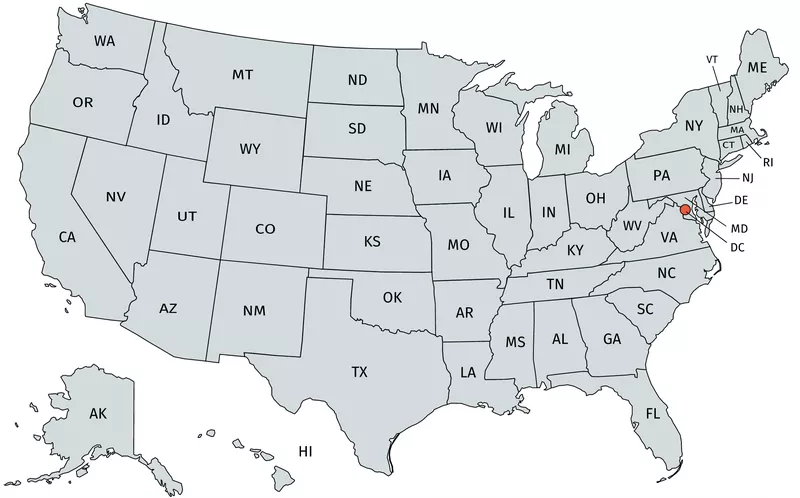
mapchart.net
Population: 702,455
Capital: Washington, D.C.
District of Columbia Facts and Figures
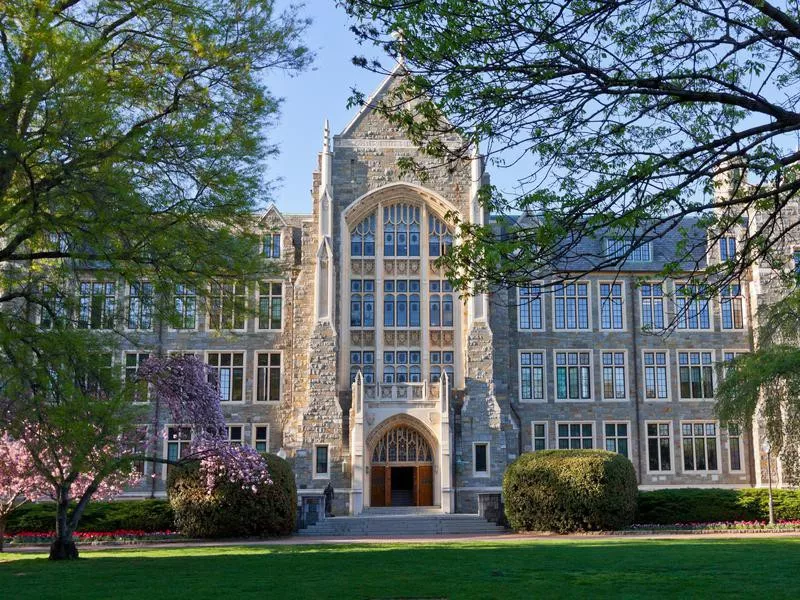
OlegAlbinsky / Getty Images
Percent holding advanced degrees: 33.9
Median household income: $92,266
Bottom Line for District of Columbia
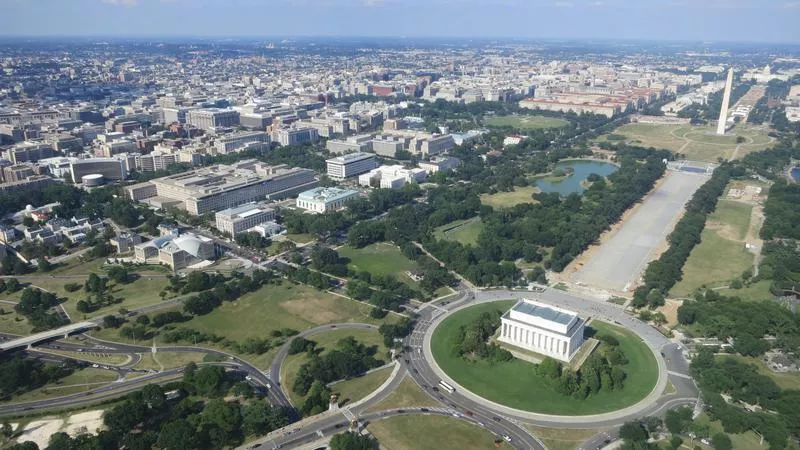
Getty Images
While Washington, D.C., is not a state, the nation’s capital is where most spending decisions are made for the federal government.
The U.S. government purchases more technological equipment and services that any other entity, encouraging many industries to establish a presence in the district. Almost 50 Fortune 500 companies and many top financial institutions have locations here.
The district is home to a number of colleges and universities, including five research universities. One of these, Georgetown University, founded in 1789, is among the oldest in the nation.
George Washington University has the largest enrollment in the District and offers over 240 graduate degrees. Most GW graduates tend to remain in the Mid-Atlantic area.
Related: Best College in Every State l Most Educated Countries in the World
